










Test your knowledge of our beloved Commonwealth. To find out how you fared, see the bottom of Vested Interest.
1. Which is the longest-running tradition of the Kentucky Derby Festival?
A. Thunder Over Louisville
B. The Pegasus Parade
C. The Royal Court
2. After a 20-year hiatus, what was the first event held by the new Kentucky Derby Festival?
A. The Great Steamboat Race
B. The Pegasus Parade
C. Thunder Over Louisville
3. The annual Run for the Rosé pits which people in an obstacle course?
A. Those who believe Pete Rose should be in the Baseball Hall of Fame
B. Waiters and waitresses carrying glasses of pink wine
C. Gardeners from Earl Thieneman Garden Center and Frank Otte Nursery wearing spades and trowels on their feet
4. According to Travellersworldwide. com the best time to visit Kentucky is when?
A. Between April and June
B. Between August and September
C. Between December and February
5. What is Kentucky’s most popular tourist attraction?
A. Churchill Downs in Louisville
B. National Quilt Museum in Paducah
C. Mammoth Cave in Edmonson County
6. How many Corvettes generally are featured at the National Corvette Museum in Bowling Green?
A. More than 80
B. At least a dozen
C. Twelve, representing the date of the February 2014 morning when eight one-of-a-kind Corvettes fell into a sinkhole under the museum’s Skydome
7. Who invented the bourbon ball?
A. Rebecca Tharpe Hunt to serve to her Mount Sterling bridge club in 1921
B. Rebecca Gooch in the lobby of the Frankfort Hotel in 1919
C. Ruth Hanly Booe at the suggestion of a dignitary at Frankfort’s sesquicentennial celebration in 1936
8. Not shying away from negative Appalachian stereotypes, Howard “Dirty Ear” Stratton and “Shady” Grady Kenny started which Kentucky event?
A. Paintsville’s Bugtussle Hootenanny (Johnson County)
B. Hillbilly Days in Pikeville (Pike County)
C. Yosemite’s Overalls Olympics (Casey County)
9. Paducah has been a member of the UNESCO Creative Cities Network for a decade, based on its importance in craft and folk art, led by which “national” museum?
A. National Quilt Museum
B. National Macramé Museum
C. National Fiber Arts Museum
10. Name the Christian County-born 23rd vice president of the United States.
A. Adlai Stevenson
B. John Cabell Breckinridge
C. Richard Mentor Johnson
Celebrating the best of our Commonwealth
© 2023, Vested Interest Publications
Volume Twenty-Six, Issue 3, April 2023
Stephen M. Vest
Publisher + Editor-in-Chief
Editorial
Patricia Ranft Associate Editor
Rebecca Redding Creative Director
Deborah Kohl Kremer Assistant Editor
Ted Sloan
Contributing Editor
Cait A. Smith Copy Editor
Senior Kentributors
Jackie Hollenkamp Bentley, Jack Brammer, Bill Ellis, Steve Flairty, Gary Garth, Mick Jeffries, Kim Kobersmith, Brigitte Prather, Walt Reichert, Tracey Teo, Janine Washle and Gary P. West
Business and Circulation
Barbara Kay Vest Business Manager
Jocelyn Roper Circulation Specialist
Advertising
Lindsey Collins Senior Account Executive and Coordinator
Kelley Burchell Account Executive
Teresa Revlett Account Executive
For advertising information, call 888.329.0053 or 502.227.0053
KENTUCKY MONTHLY (ISSN 1542-0507) is published 10 times per year (monthly with combined December/ January and June/July issues) for $25 per year by Vested Interest Publications, Inc., 100 Consumer Lane, Frankfort, KY 40601. Periodicals Postage Paid at Frankfort, KY and at additional mailing offices.
POSTMASTER: Send address changes to KENTUCKY MONTHLY, P.O. Box 559, Frankfort, KY 40602-0559.
Vested Interest Publications: Stephen M. Vest, president; Patricia Ranft, vice president; Barbara Kay Vest, secretary/treasurer. Board of directors: James W. Adams Jr., Dr. Gene Burch, Gregory N. Carnes, Barbara and Pete Chiericozzi, Kellee Dicks, Maj. Jack E. Dixon, Bruce and Peggy Dungan, Mary and Michael Embry, Judy M. Harris, Greg and Carrie Hawkins, Jan and John Higginbotham, Frank Martin, Bill Noel, Michelle Jenson McDonnell, Walter B. Norris, Kasia Pater, Dr. Mary Jo Ratliff, Barry A. Royalty, Randy and Rebecca Sandell, Kendall Carr Shelton and Ted M. Sloan.
Kentucky Monthly invites queries but accepts no responsibility for unsolicited material; submissions will not be returned.

More on ‘E’ vs. ‘e’
I like Kentucky Monthly, plus I’m from Breathitt County in Eastern Kentucky. Like the great majority of my fellow citizens, I would appreciate the E in Eastern Kentucky being capitalized (February issue, page 64). It is simply a sign of great respect. Please consider this my “vote.”
Thank you, Mr. Vest. My wife, who attended your Jackson appearance speaking to the Women’s Club and came home impressed by your talk, also votes for a capital E. Please know that we hope you make the right decision. We enjoy your writing and Kentucky Monthly. Tommy and Sandra Noble, via email
I agree with your friend that Eastern Kentucky should be capitalized. And while I’m at it, can you please replace that I am a professor at the
University of Kentucky to a “professor emeritus” at the University of Kentucky on the birthday page?
Always great getting your magazine and great articles, also playing all about Kentucky games, but I must admit that I cheat little bit with Google.
Arturo Alonzo Sandoval, Lexington

[Gayle Deaton] is right, Steve. The direction one is traveling (north, south, east, west) is properly a lower case word. The place where one resides (North, South, East, West) is appropriately upper case. It was not, after all, the great war between the north and the south.
Despite the muddled identities of this or that community or institution, Eastern Kentuckians know where they come from and are fully deserving of the “E” for which Ms. Deaton so proudly lobbies.
Rob O’Brien
, AmburgeyMy daughter and I love Kentucky Monthly. It was interesting to read about Kentucky’s Most Visible Alums in the February 2023 issue (page 46). I saw Lindsey Wilson College, with Carrie Luker Farris’ name under her photo. She was a roommate of mine in 1965-66. Our dorm room was on the second floor, over the house mother’s apartment. Cooking in the room was not allowed, so to overcome this inconvenience, I heated soup in the popcorn popper, our other roommate, Donna, fanned the smell of the soup out the window. Carrie watched the hallway for the house mother. We kept food outside on the window seal to stay cold, in the winter months.
It was great to see a former classmate involved at LWC. The campus has changed since the days it was a junior college.
Gaye N. McCubbin, Green CountyWe Love to Hear from You! Kentucky Monthly welcomes letters from all readers. Email us your comments at editor@kentuckymonthly.com, send a letter through our website at kentuckymonthly.com, or message us on Facebook. Letters may be edited for clarification and brevity.
UNITING KENTUCKIANS EVERYWHERE.
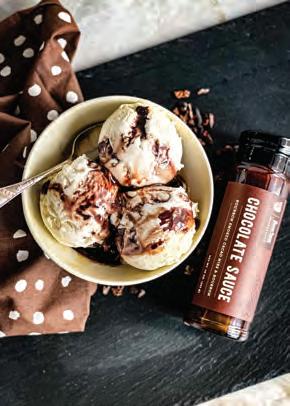
While on a trip to the stunning Scottish islands, Jerry and LaAnna Mraz of Elizabethtown visited the Harris Tweed shop in Stornoway, Scotland.


Experience high school differently. The Gatton Academy of Mathematics and Science offers gifted and talented high school juniors and seniors in Kentucky a chance to start college while finishing high school at Western Kentucky University. This two-year residential STEM program allows students to participate in college coursework full-time, pursue faculty-mentored research, study abroad, and thrive in a supportive community. With scholarships covering tuition, housing, and meals, students at Gatton can explore their interests in STEM. Explore your infinite possibilities at www.wku.edu/academy.
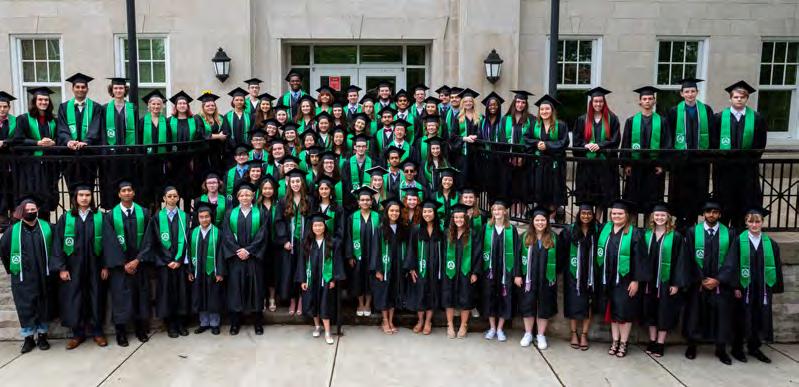




Country musician Dustin Collins hasn’t lived in the Bardstown and New Haven area since he returned from the service and moved to Nashville almost 12 years ago. The United States Army veteran still comes home to Kentucky for frequent visits, and on the day of this interview, he had just returned from feeding the dogs at his father-inlaw’s Nelson County house.
Country life and country values run deep for Collins. “Just about every aspect of my music comes from where I’m from,” he said.
He draws on his own childhood and his life experiences, but he’s not afraid to tap into his buddies’ antics. “They’re not always real happy about it,” he admitted, but he “changes names to protect the guilty.”
Collins’ family influenced his interest in music. His mother sang, and his father, uncle and grandfather were guitar players. Collins’ father bought him his first guitar. But it wasn’t exactly for sentimental reasons or to carry on the family’s musical traditions.
“I got caught fooling around with [Dad’s] guitar. It was an expensive guitar, so he gave me one of my own,” Collins explained. Even though it was a cheap acoustic guitar, it opened a whole world for the young man. “That’s all I wanted to do all the time in high school. I jammed and jammed and jammed.”
Although Collins loved music, he didn’t consider it for a career when he was growing up. He wanted to be a fish and game officer, but it turns out that is a tough gig to land. A friend who was a fish and game officer “told me it’d be easier to be a rock star,” Collins said. Collins’ response was: “Fine, I’ll just go play country music.”
Collins took a little detour before beginning his country music career. He served in the Army from ages 17-22, then moved to Nashville so he could focus on life as a musician. “I do music full time. I write, and I tour. We pretty much keep our nose to the grindstone every day,” he said. Living in Music City definitely has helped. “Music is a relationship game, for sure. Just being around town and meeting people” has led to finding work.

Collins’ musical influences are wide and varied. Hank
Williams Jr. and Tracy Lawrence informed his country side, but he also listened to 3 Doors Down and Matchbox
Twenty while growing up. Kentucky artists hold a special place in his heart. “Look at the playlist on my phone, and there are a lot of Kentuckians,” he said. There are older musicians such as Montgomery Gentry, John Michael Montgomery and Keith Whitley, but he stays current with Jericho Woods, Tyler Childers and Chris Stapleton. Being a musician these days means being able to stay current and valid. Collins maintains a Facebook page and an Instagram account; he co-writes sessions around Nashville; he writes his own songs; and he tours and makes videos. While he has an independent company for his music, he has a distribution deal with Sony Orchard and works with a management team on social media. He explained those arrangements as following the path that independent artists have taken, while being backed by the support a corporation can offer. “It’s definitely a team effort,” he said.
Collins loves both the singing and songwriting aspects of his job. “I love writing. It’s one of my favorite parts,” he said. “But you can’t beat being out on the road, being with the band.”
Being on the road for Collins means really being on the road. He and his band have played many venues—from dusty honky-tonks to arenas. “Basically, if you can have music in it, we’ve played there,” he said. The road has included stops in the Caribbean, Mexico and Belize.
Collins has a strong fan base in Belize and goes there three or four times a year to play gigs. “Belize is one of the most beautiful places on the planet,” he said. Whether he’s feeding his father-in-law’s dogs or playing in front of an audience in Belize, Collins carries the music of Kentucky with him.
For Collins’ touring schedule, visit DustinCollinsOfficial. com, the Dustin Collins Facebook page or @ DustinCollinsOfficial on Instagram. And if you’d like to help him out, Collins mentioned that you could “hit up your local radio stations to play ‘Gone,’ ” his latest single.









While we had a mild winter, spring and its pleasant days are here. We’ll deal with a few more barometric ups and downs, but the redbuds and robins are around, even if a light dusting of snow might show up.
The seasonal transition is obvious in the grocery stores, where plump sweet potatoes are resting beside tiny new potatoes. Hefty cabbages, broccoli and cauliflower are housed near tender asparagus, local strawberries and rosy red radishes. A great way to take advantage of the transitioning produce is to combine the hearty cold-weather vegetables with their spring counterparts, then pull them all together with a zingy dressing. The following salad recipes hearken spring and wake up our taste buds just like the budding branches of the ornamental trees in our yards.
JANINE WASHLE
SERVES 6-8
6 cups chopped cauliflower
4 cups chopped broccoli
2 cups halved strawberries
½ cup roasted pistachios, roughly chopped
½ cup chopped Italian parsley
1/3 cup chopped green onions
1 tablespoon fresh lemon zest
Dressing
¼ cup fresh lemon juice
¼ cup white vinegar
3 tablespoons olive oil
4-5 tablespoons honey
¼ teaspoon salt
1. In a large bowl, combine cauliflower, broccoli, strawberries, pistachios, parsley, green onions and lemon zest.
2. In a separate bowl, whisk together lemon juice, vinegar, olive oil, honey and salt.
3. Pour dressing over salad mixture. Toss well to coat all ingredients. Refrigerate leftovers in a covered container.
SERVES 4-6
Dressing
½ cup extra virgin olive oil
¼ cup white balsamic vinegar or lemon juice
1 large garlic clove, minced
1½ teaspoon za’atar spice blend
1 teaspoon sea salt
¼ teaspoon black pepper
Salad
3 cups cooked French lentils
1 15-ounce can garbanzo beans, rinsed, drained
2 cups baby arugula, washed
1 cup sliced radishes
½ cup garden peas (frozen works fine)
½ cup sliced scallions
¼ cup minced parsley
1. Prepare dressing in a large bowl by whisking together olive oil, vinegar, garlic, za’atar, salt and pepper until combined.
2. Toss together lentils, garbanzo beans, arugula, radishes, peas, scallions and parsley. Pour dressing over top and toss to combine. Serve immediately. If preparing a day ahead, refrigerate salad and dressing separately and combine when ready to serve.
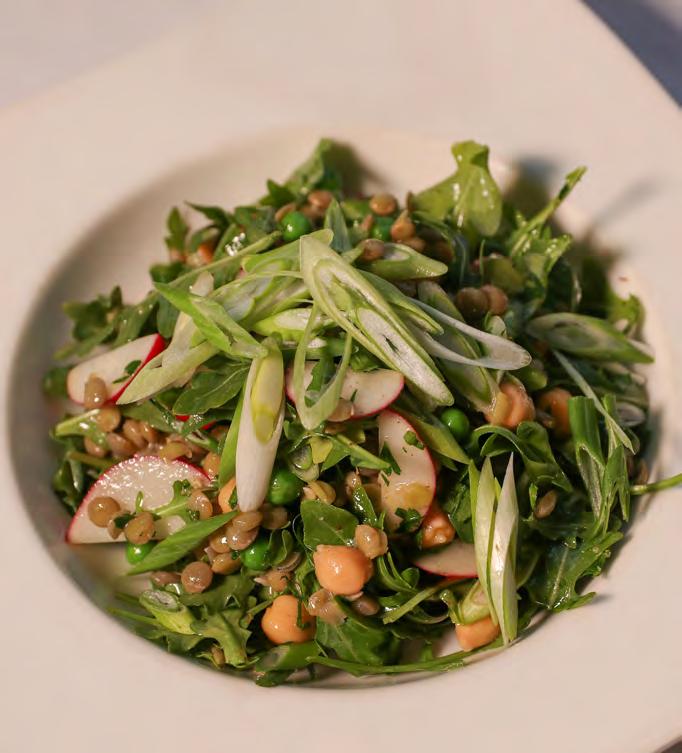

SERVES 4-6
5 cups shredded cabbage
4 cups chopped collards, kale, or a mix of both
2 cups fresh clementine or mandarin orange segments
1 large yellow bell pepper, thinly sliced
¼ cup diced red onion
Dressing
½ cup mayonnaise
3 tablespoons apple cider vinegar
1½ tablespoons granulated sugar
½ teaspoon sesame seeds, optional
½ teaspoon hot sauce, or to taste
¼ teaspoon salt
1. Combine cabbage and greens in a large bowl. Halve each orange segment and add to bowl along with bell pepper and onion.
2. In a separate bowl, whisk together mayonnaise, vinegar and sugar until smooth. Stir in sesame seeds, hot sauce and salt.
3. Pour dressing over slaw and stir until everything is well coated.
Recipes provided by Janine Washle and prepared at Sullivan University by Ann Currie

Photos by Jesse Hendrix-Inman

SERVES 6
1 bunch kale, washed and ribs removed
1 bunch mustard greens, washed and ribs removed
1 bunch collard greens, washed and ribs removed
3 tablespoons bacon grease
¼ cup chopped onion
½ teaspoon hot sauce
2 tablespoons apple cider vinegar
1 teaspoon brown sugar, packed
¼ teaspoon seasoned salt
½ cup chopped crispy bacon
1. Bringing a large pot of water to a boil over high heat. While water is heating, roughly chop kale, mustard greens and collards. Transfer chopped greens to boiling water and blanch until bright green. Stir a few times to evenly wilt greens. Greens are done when they turn bright green and are wilted.
2. Quickly scoop out greens and stop cooking process by plunging them into a large bowl of ice water. Drain well and transfer to a serving bowl.
3. Prepare dressing by heating bacon grease in a medium-size heavy skillet over medium-high heat. Add onions and cook until softened, about 3 minutes.
4. Add hot sauce, vinegar, brown sugar and salt. Stir to melt sugar and cook 1 minute. Immediately pour over wilted greens and toss to coat evenly. Add bacon and toss again. Adjust seasonings. Serve right away.
Note: Best when served the same day.

SERVES 6

4-5 cups cubed cooked sweet potatoes (shortcut: 1 29-ounce can yams, rinsed and drained)
2 limes
1/3 cup white balsamic vinegar
¼ cup cold water
¼ cup vegetable oil, or liquid coconut oil
3 tablespoons chopped fresh mint
¼ cup chopped fresh cilantro
¼ teaspoon sea salt, or to taste
1 small serrano or jalapeño pepper, seeded and diced
1 cup fresh pineapple chunks
1 cup fresh mango or papaya chunks
2/3 cup unsweetened coconut flakes
1. Place sweet potatoes in a large bowl. Cut up any chunks that are too large for a single bite.
2. Zest one lime over the sweet potatoes.
3. In another bowl, juice both limes; whisk in vinegar, water and oil. Add mint, cilantro and salt. Pour mixture over sweet potatoes.
4. Add pepper, pineapple, mango or papaya, and coconut flakes. Gently stir to combine. Transfer to a medium-sized rimmed platter, which makes serving this chunky salad easy. Note: Can be prepared the night before. Refrigerate leftovers in a covered container.
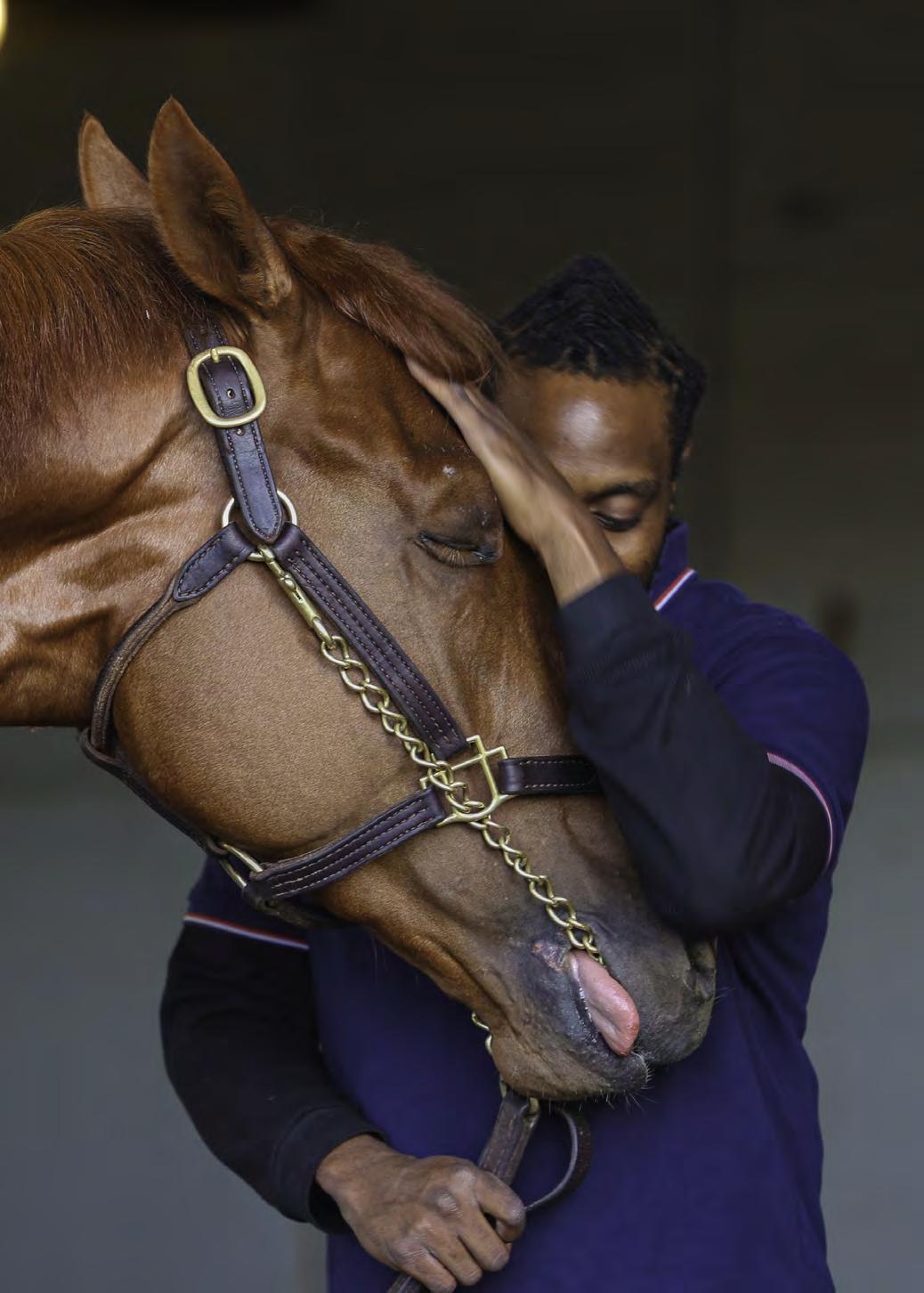
Sometimes in horse racing, you win something above and beyond a trophy or money that is far more enduring and valuable. For Jerry Dixon Jr., it’s taken a year to realize the most important thing he took from one of the world’s biggest sporting events.
As the groom of 2022 Kentucky Derby winner Rich Strike, Dixon was a key member of the team behind the 80-1 long shot. He did all the routine things a groom does: bathing, applying leg wraps, walking the horse around the shedrow and to the racetrack for workouts.
But Rich Strike and the Derby were different. In the two weeks before the big race, when Rich Strike was stabled at Churchill Downs, he was Dixon’s sole responsibility rather than one of several horses that Dixon groomed. Dixon didn’t let the horse out of his sight. Every step Rich Strike took when not on the racetrack was with Dixon on the end of a shank.
In those two weeks, there were touching—even comical—moments and times of sheer terror for Dixon.
He and Rich Strike power-napped together after morning workouts. Whoever would lie down first signaled nap time for the other. The one constant was who woke who up first: Rich Strike would stand up, go to his feed bag or water bucket, and drop straw or water on Dixon’s head. The horse wanted Dixon’s company, and it was Dixon’s job to provide it.
The dropped straw or water to awaken Dixon, not to mention the fact that they napped together—Dixon just outside Rich Strike’s stall with his head actually in it—
indicates how close they became. It happens only with good grooms such as Dixon and a willing horse.
But their relationship didn’t start that way.
For Dixon—32 years old, a 14-year veteran of the racetrack, and the fourth generation of Dixon horsemen—Rich Strike was his first encounter with what racetrackers call “the big horse”—the gifted runner with the potential to win important races and big purses. All Derby starters are 3-year-olds, equivalent in human terms to teenagers physically. Famed Thoroughbred trainer Charlie Whittingham once said of racehorses— particularly young ones—“They’re like strawberries. They can spoil overnight.”
They also can mature mentally and change physically, seemingly overnight, to become champions.
While physical maturity may have arrived at just the right moment for Rich Strike, anyone who has parented a teenager will tell you behavioral and physical maturity do not usually coincide. This accounted for a relationship between Dixon and Rich Strike that got off to a somewhat rocky start.
“We didn’t get along at first,” Dixon recounted. “He was very antsy and pushy. He wouldn’t stand still to let me put wraps on him. I had to take a step back and try to understand that he was still a young horse, a colt.”
As late as the two weeks before the Derby, while Rich Strike was stabled at Turfway Park in Florence, Dixon still was learning about the horse he had been around since
just before Christmas. Dixon’s father, Jerry Sr., an experienced horseman, was brought in by Rich Strike’s trainer, Eric Reed, to mentor his son and, more than anything, to be a calming influence.
“I was so nervous,” the younger Dixon recalled. “ ‘Is there anything I can do to the horse that I could mess up?’ ‘Did I put the wraps on too tight?’ ” Those questions and many more coursed through his mind daily.
“My dad told me more than once, ‘Stop stressing out. Stop worrying. You know what you’re doing. Just keep believing in yourself.’
“ ‘You’ve got this.’ ”
It was a process, with moments fraught with peril, such as the time Rich Strike was inspected by a state veterinarian—standard protocol for Derby starters. When the vet asked Dixon to have the horse jog a short distance, the reaction was classic Rich Strike: He reared up on his hind legs, wanting, as Dixon euphemized, to “put his two front hooves in my pockets.”
A rearing horse can fall backward or awkwardly in another direction, causing injury. But the horse safely came down to four-point contact with Mother Earth.
Dixon’s favorite Derby memory, even over the actual race, was something out of the ordinary on the big day after Rich Strike’s morning bath, when the horse was back in his stall. “He was quiet, really quiet for most of the morning, and it was odd,” Dixon recalled. “It didn’t really seem that he knew that he was ‘in’ [a race] until after he got his bath.
“He got with Dad, and [Dad] walked him for a few rounds in the shedrow, let him settle in, and then put him back in the stall. Everything was quiet for like five seconds, and all of a sudden, he let out a sound like a roar, and he charged the webbing [a plastic barrier in a stall doorway]. I saw his chest swell.”
That moment dispelled all concerns about the horse’s unusual behavior earlier in the day and perhaps sent a message to Dixon and the Rich Strike team: “I’m ready to run; I know what today is.”
It also may have been Rich Strike saying, “I got this.”
Indications both tangible and portentous followed. As soon as Rich Strike walked onto the track near the backstretch, the Eminem song “Lose Yourself” came on over the loudspeakers, Dixon recalled. As he led Rich Strike around the track on the way to the paddock for saddling, he could feel and sense the horse seeming to gather strength.

The race might attest to that: The horse broke from the farthest outside gate position and trailed the 20-horse field before accelerating into the far turn. Before him, though, was what looked to be an impenetrable wall of horses.
Jockey Sonny Leon guided him into the thick of it, and then something happened akin to the Red Sea parting. Space opened on the inside rail as the horses neared the
final turn and the top of the homestretch. Rich Strike quickly filled the space on the rail, finding clear running room. He may have won the race at that moment. He sped down the rail, adroitly ducking away from the rail to pass a tiring horse halfway down the stretch. He then returned to the rail and bolted past two tiring favorites to win.
Dixon is convinced the horse chose the path in and around horses as much as Leon to win the Derby. “That split second of Sonny making the right move at the right time with Rich Strike? I think that was ‘Richie,’ ” he said.
Dixon, who is deeply spiritual, believes there was another entity directing Rich Strike’s path. “It was God,” he said.
In the crush of people on the track before Rich Strike came back to the winner’s circle, Dixon was running around a mob of people in the center of the track finding no other words than: “Oh my God! Oh my God!”
He had been part of something that three previous generations of Dixons on the racetrack had not experienced. Someone in the days after the Derby found a book with photos of old horsemen that included his greatgrandfather, John L. Dixon, on the backside of Churchill Downs. “I was blown away,” he said. “I got to live out the dream that I’m sure he wanted.”
Of course, his time with his father made this Derby even more special.
“We talked, and we cried. He told me how proud of me he was. I told him how happy I was that he was there,” he said.
After the race, Dixon left Louisville for work, splitting time at Reed’s Mercury Equine Center in Lexington and

Belterra Park in Cincinnati, where Reed stables some horses.
Several days after the Derby, he visited Rich Strike, who had been vanned to Mercury.
“I cried the first moment I saw him,” Dixon recalled. “He dropped his head and waited on me to walk up and rub on him.”
The “antsy, pushy” young colt who refused tethering to the back wall of his stall for grooming had mellowed. Possibly, he had harnessed youthful exuberance long enough to unleash a memorable run from last to first in Thoroughbred racing’s biggest event.
Reed opted not to run Rich Strike in the Preakness Stakes, the second jewel of the Triple Crown, and Rich Strike returned to the track in the third jewel, the Belmont Stakes, where he finished sixth. He closed out the year with a respectable fourth in the Breeders’ Cup Classic at Keeneland and a sixth-place finish in the Churchill Downs Stakes.
Rich Strike continues to run in big-money races this year rather than head to the breeding shed.
In the weeks following the Derby, Dixon left the Reed stable for a position at Belterra that would keep him close to home and to his wife and daughter. Today, he is barn foreman for trainer Matt Sims, who stables horses at Turfway Park. Dixon aspires to be a trainer.
“I’ve been to the Derby. I’ve won the Derby,” he said confidently. “There’s no doubt in my mind that, with any horse I’m taking care of, I can win any race now. It’s given me more confidence. I feel like I can always be successful. I don’t doubt myself anymore.” Q
The Bluegrass Land Conservancy partners with landowners to help them maintain the traditional uses of their property
BY KIM KOBERSMITH
The Bluegrass region is one of Kentucky’s quintessential landscapes. Scenic pastoral views are dotted with bourbon rickhouses. Mile after mile of black fences shelter world-renowned Thoroughbred horses whose bones are strengthened by the calcium-rich soil. Verdant farmland grows food and crops.
With the continued growth of Lexington, Fayette County residents in the mid-1990s became concerned that the agricultural and natural lands of the region were under increasing threat of development. This would be a major loss, of both the rural character of the area and of many rural enterprises that are foundations of Kentucky’s economy.
A group of concerned county
residents gathered to strategize about solutions, ultimately creating a nonprofit committed to conservation. The Bluegrass Land Conservancy partners with landowners, offering a tool for them to maintain the traditional rural uses of their land. While landowners retain ownership and the right to sell their property or pass it down to others, conservation easements enable them to voluntarily entrust certain present and future development rights to the conservancy. The process works to protect a property’s agricultural viability, natural habitat and rural heritage in perpetuity.
“We want the conserved lands to be locally owned and in the hands of farmers,” said Jesse Hancock, Bluegrass Land Conservancy executive director. “We encourage long-term usability and want
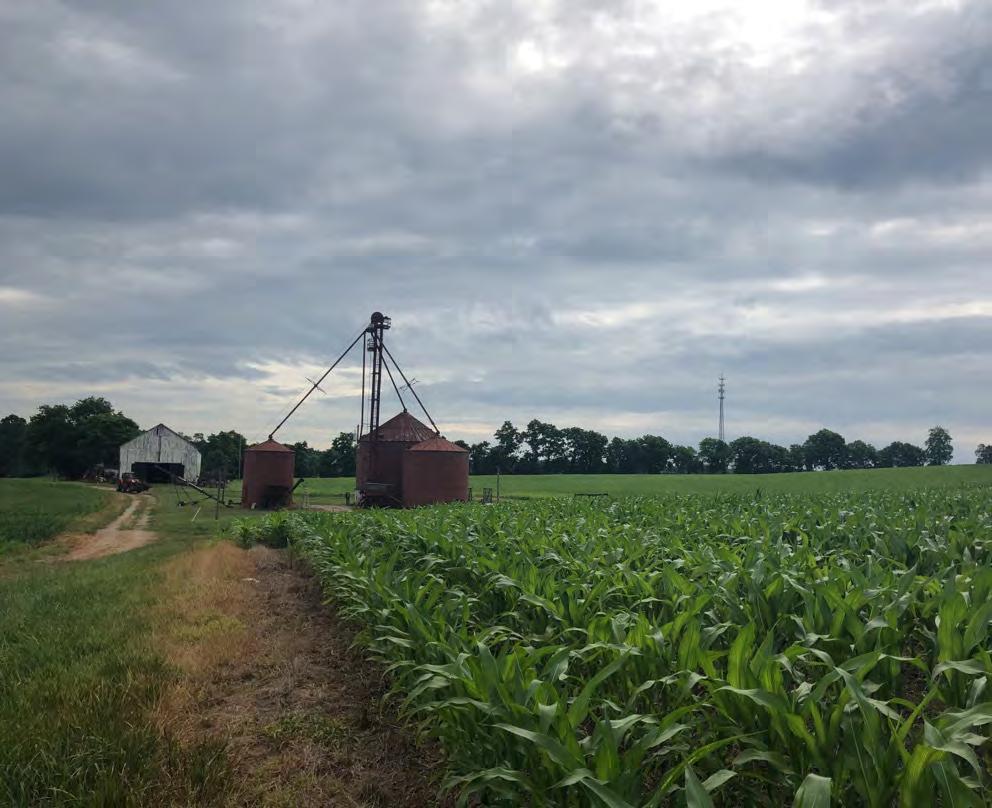
landowners to live, hike, farm and hunt on the land. We want to preserve the rural uses of land while protecting it from major development or subdivisions.”
This focus on working lands makes the Bluegrass Land Conservancy unique in Kentucky. Spanning 26 counties between Lexington and Louisville, it is the largest regional land trust in the Commonwealth. It holds conservation easements for 159 farms totaling 33,000 acres.
Each easement is different, tailored to the specific needs of the landowner and the place. BLC’s role is as a steward, ensuring the easement is respected by all landowners in the future. As an organization, it is not opposed to development. Instead, it focuses on proactive land conservation as a way to preserve the state’s best resources
and encourage local conversations about how an area can grow without encroaching on important agricultural and natural resources in that area.
There are as many motivations for conservation as there are easements. Sometimes, the motivation is financial, such as tax benefits. Sometimes, it’s a way for small family farms to remain in production with less pressure on the next generation to take over. Sometimes, it’s an environmental decision, a desire to protect habitats and waterways. Or it can be a community decision, a way to create contiguous conservation lands with ecosystem-level impact.
Two of central Kentucky’s bestknown Thoroughbred farms have entrusted property to the Bluegrass Land Conservancy—Claiborne Farm in Bourbon County and Three Chimneys Farm in Woodford County. The late R.J. Corman put an easement on some of the acreage at his company’s Jessamine County corporate headquarters in his will.

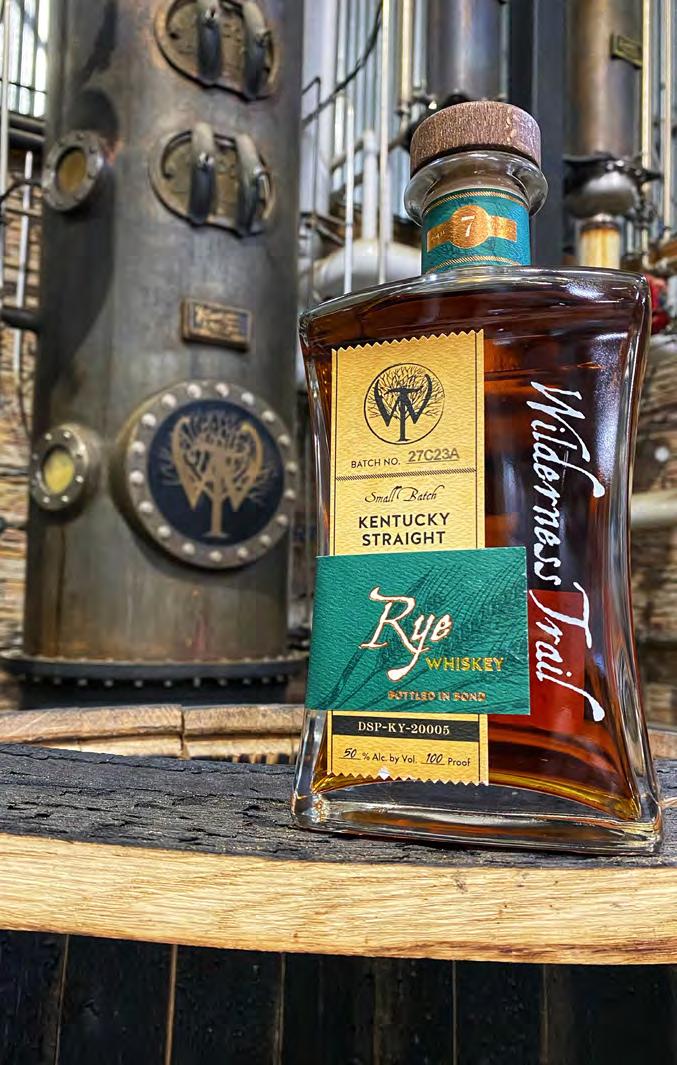
Through the years, the conservation easement tool has proved to be a useful and flexible tool for a wide range of uses. Protecting farmland is a key to the conservancy’s work. In its quest to conserve the harder-to-define rural character of the region, though, it also includes water resources and natural areas in its portfolio. For example, Elkhorn Creek in Franklin County is a popular recreation destination that is experiencing development pressure. Hancock spoke recently with the fiscal court on how landowners can be proactive about retaining the waterway’s natural qualities.

Hoppy Henton’s family has farmed in Woodford County for generations. He has twice put land into a conservation easement with Bluegrass Land Conservancy and previously served on the organization’s board of directors. Henton, who is farmdependent for his livelihood, readily shares his lived experience operating a commercial farm with an easement.
“It is vital to conserve farmland,” he said. “I am not a preservationist, but conservancy is different. It doesn’t constrain traditional
agriculture and keeps the agricultural base in place. It is crucial that people realize it does not intrude on the commercial business of farming, and no one is going to tell them how to farm their own land.”
The first easement Henton donated was for tax purposes, reducing income tax after selling another piece of land. The 2022 conservation was a major family decision that included his adult children, who are part of the farm business. As a farmer, Henton sees the promise of conservancy to offer an alternative to the traditional choices of farming until you die or sell out. He considers it a major step in the future of the farm and its continuity.
Henton also sees it as a major step in the preserving the future of his community. Nearby landowners entering into contiguous conservation efforts together make the biggest impact.
“We have something pretty special here,” he said. “It would be a mistake to put prime farmland in the Bluegrass region under asphalt, even in the name of economic development.”
One of the surprises for Henton in land conservancy is that it fits a broader profile of rural Kentucky than he first thought. It is a solution for more than just a wealthy few and extends to people across the economic spectrum who want to keep their agricultural way of life.
The permanent conservation of the 650-acre Sisters of Loretto Motherhouse Farm in Marion County was a long time in the making.
The Sisters of Loretto and Co-members make up the Loretto
Community. They possess a deep commitment to social and environmental justice, and have called their land home for more than 200 years. The Sisters first began talking about conservation in the 1980s. In those early days of the movement, they
wanted a partner that would understand the needs of the farm’s living community of 200 people.
Loretto Community Co-member Jessie Rathburn, who serves as the earth education and advocacy coordinator, has helped steward this process. “We absolutely wanted to protect the land, but we needed to give the community new ways to live into our mission in the future in ways we don’t yet know,” she said.
“Bluegrass Land Conservancy helped us articulate what options we can leave on the table for the future and what options to take off the table forever, without committing to a certain path right now.”

In January, the Sisters of Loretto and BLC celebrated the conservation of 110 acres of cropland, 242 acres of pasture and hayfields, and 265 acres of woodlands. The altar of the chapel at the farm held pictures of the property throughout the seasons and fossils from the creek beds.
couldn’t find the right land trust to support their efforts.
In the 2010s, plans to build a natural gas pipeline threatened to take some of the Sisters’ land by eminent domain. They and numerous community partners successfully blocked the pipeline, but conservation again became a pressing issue.
They asked themselves important questions. What is their responsibility to this land and their community? How can they balance the needs of the human and other species that call it home? They needed a partner that could help protect regenerative agricultural lands, forested hills, waterways and pasturelands. And they
Community members brought special rocks and milkweed pods, representations of the sacredness of the land. They sang; they prayed a litany of gratitude; they read scripture. It was a promise to give the land the freedom to do what it does forever.
“Bluegrass Land Conservancy made this possible,” Rathburn said. “They were willing to work with all of our intense and involved community processes. I really respected the manner in which they accompanied us as partners. They never tried to force a particular agenda but listened to what our desired goal was and figured out how to make it possible. I highly recommend them to other landowners.” Q
One of America’s greatest community celebrations, the Festival is known for its whirlwind of more than 70 special events and programs, and how it brings the community together in celebration every spring.

The Kentucky Derby Festival is a private, not-for-profit, community organization dedicated to providing unique entertainment for the Greater Louisville area.
More details on the 2023 Festival can be found online at KDF.org or on social media @KyDerbyFestival. *Schedule subject to change.
FOR MORE INFORMATION, VISIT
Celebrating Kentucky’s famous Run for the Roses® has become so popular and so massive, the Kentucky Derby Festival this year presents TWO parades, THREE different types of Pegasus Pins, MULTIPLE parties and countless food options. The list of events, parties, competitions and concerts making up the annual festival is as exciting as it is extensive.
FAMILY FUN

ACTIVE LIFESTYLE
CULINARY ENTERTAINMENT + SOCIAL
Photos courtesy of the Kentucky Derby Festival
What makes the Pegasus Parade better? How about two of them! “We love a parade so much that we’re having two again in 2023,” said Christa Richie, the Kentucky Derby Festival’s Communications Manager.
The first will be the Zoeller Pump Company Touring Parade on April 1. This is the third year for the touring parade.
“It’s comprised of about a dozen units traveling through neighborhood streets,” Richie said. “[It] offers a sneak peek of what’s to come in the traditional parade.”
Balloons of Goldie Pegasus, Buddy the Dinosaur, Brainy Smurf and Daniel Tiger will be floating down streets in various community neighborhoods, including St. Matthews, Shelby Park, Downtown Louisville, Portland, Russell Neighborhood, Shively and more. The Royal Court and other KDF VIPs will take part in the daylong tour. A complete neighborhood-by-neighborhood schedule can be found at kdf.org.
The beloved Zoeller Pump Company Pegasus Parade, now in its sixth decade, will wind its way west down Broadway with a theme of “Celebrating Derby Traditions” to highlight everything Kentucky Derby.
Previously held on the Thursday before the Kentucky Derby, “the Zoeller Pump Company Pegasus Parade will be held on Sunday again this year so more festival fans and their families can join us to help kick off Derby week,” Ritchie said.
The Pegasus Parade hits Broadway at 3 p.m. on April 30 with nearly 100 units, including inflatables, floats, marching bands and equestrians. For those who can’t make it to downtown Louisville, the parade will be broadcast live on WAVE-TV.
TUESDAYS THROUGH MAY 9. MAIN EVENT, 12500 SYCAMORE STATION PLACE
Wear your 2023 Pegasus Pin and get special deals and promotions, like a walk-in special every day, and on Tuesdays, kids eat free with a food purchase of $11.99 or more. (*Kids 12 years old or younger.) More info at PegasusPins.com Sponsor: Main Event.
APRIL 1-30
The citywide celebration of volunteering to help others. Individuals, companies and groups can volunteer online at www.mygiveaday.com Agencies and organizations that have projects needing volunteers can also add their information to the website.
APRIL 2
ZOELLER PUMP COMPANY KENTUCKY DERBY FESTIVAL TOURING PEGASUS® PARADE
NOON-5PM VARIOUS LOCATIONS
This traveling display takes the Derby Festival into the community and through neighborhoods to help kick off the spring celebration around the city. Routes will be shared ahead of the event to allow fans to decorate their homes and neighborhoods. Sponsor: Zoeller Pump Company. Contributing Sponsor: Kentucky Venues. Official Hotel: The Galt House Hotel.
APRIL 7
CAESARS FOUNDATION OF FLOYD COUNTY KENTUCKY DERBY FESTIVAL FAMFEST
4-8PM FLOYD COUNTY FAMILY YMCA, DOWNTOWN NEW ALBANY
Family-friendly event with a special preview of the 2023 Festival, featuring inflatables, activities, face painting and more.

First 500 attendees receive a custom event pin. Sponsor: Caesars Foundation of Floyd County. Contributing Sponsor: Rumpke Waste & Recycling. Media Sponsor: 102.3 The Rose.
APRIL 15
BRIGHTSIDE SPRING COMMUNITYWIDE CLEANUP
VARIOUS LOCATIONS THROUGHOUT LOUISVILLE
Brightside encourages all residents to take part in the Community-Wide Cleanup. All cleanup teams will receive bags and gloves at no cost, and the first 5,000 volunteers to register will also receive a free T-shirt. Contact Brightside at Brightside@ louisvilleky.gov to participate.
APRIL 22
KENTUCKY DERBY FESTIVAL THUNDER OVER LOUISVILLE®
DOWNTOWN LOUISVILLE
RIVERFRONT, WATERFRONT PARK, RIVER ROAD AND SOUTHERN INDIANA SHORELINE
FoodFest and Thunder On the Ground open at 11AM. Airshow at 3PM. Fireworks at 9:30PM

Viewing areas: North Great Lawn opens at 9AM. Admission is free with a 2023 Pegasus Pin®. (No tents, stakes, tape or pets.)
Thunder Chow Wagon at Waterfront Park and the East River Road Beer Garden.
Admission is free with a 2023 Pegasus Pin®. (Open 11AM-11 PM. No tents, stakes, tape or pets.) West Belvedere (Open 11AM-11PM. No tents, stakes, tape or pets.) Meijer Family Fun
Zone new location at the Big Four Bridge. Admission is free with a 2023 Pegasus Pin.® (Open 11AM-7PM. No tents, stakes, tape or pets.)
All-day live coverage on WAVE TV and MIX 106.9.
2023 Sponsors: Caesars Southern Indiana, Humana, LG&E, Meijer and UPS. Official Health Care
Provider: UofL Health. Official
Craft Beer: TEN20 Craft Brewery. Official Seltzer: High Noon. Official Hotel: The Galt House Hotel.
Thunder on the Ground Military Zone Sponsor: Akima.
APRIL 22
LOUISVILLE MUHAMMAD ALI INTERNATIONAL AIRPORT THUNDER OVER LOUISVILLE VIP ROOFTOP PARTY PRESENTED BY FARM CREDIT MIDAMERICA AND KENTUCKY PROUD
2:30-10PM WATERSIDE PARKING GARAGE ROOFTOP
Front row seat for Thunder. Tickets: $165 each or Premium VIP Table of 8, $2,000. Purchase at ThunderOverLouisville.org
Sponsor: Louisville Muhammad Ali International Airport.
Presenting Sponsors: Farm Credit Mid-America and Kentucky Proud.
APRIL 28-29
L&N FEDERAL CREDIT UNION KENTUCKY DERBY FESTIVAL GREAT BALLOONFESTSM
Admission is free with a 2023 Pegasus Pin®. Contributing Sponsors: Breeze Airways, Louisville Muhammad Ali International Airport and Kentucky Kingdom & Hurricane Bay. Media Sponsor: MIX 106.9.
APRIL 28
KENTUCKY DERBY FESTIVAL GREAT BALLOON RUSH HOUR RACE
7AM LAUNCH, BOWMAN FIELD
Admission is free with a 2023 Pegasus Pin®. Sponsor: L&N Federal Credit Union.
Contributing Sponsors: Breeze Airways, Louisville Muhammad Ali International Airport and Kentucky Kingdom & Hurricane Bay. Media Sponsor: MIX 106.9.
APRIL 28
KENTUCKY DERBY FESTIVAL GREAT BALLOON GLOW
9PM KROGER’S FEST-A-VILLE ON THE WATERFRONT
Admission is free with a 2023 Pegasus Pin®. Streamed live on WLKY.com on April 28. Broadcast special on April 29 at 8PM on WLKY. Sponsor: L&N Federal Credit Union. Contributing Sponsors: Breeze Airways, Louisville Muhammad Ali
International Airport and Kentucky Kingdom & Hurricane Bay. Official Broadcast Partner: WLKY. Media Sponsor: MIX 106.9.
APRIL 29
KENTUCKY DERBY FESTIVAL GREAT BALLOON RACE®
7AM LAUNCH, BOWMAN FIELD
Sponsor: L&N Federal Credit Union. Contributing Sponsors: Breeze Airways, Louisville Muhammad Ali International Airport and Kentucky Kingdom & Hurricane Bay. Media Sponsor: MIX 106.9.
APRIL 29
KENTUCKY DERBY FESTIVAL KEN-DUCKY DERBY
2-5PM. VIP PARTY 2PM. CALL TO THE POST 4PM. DUCK LAUNCH
5PM. KROGER’S FEST-A-VILLE ON THE WATERFRONT
See the launch of 46,000 ducks into the Ohio River for a chance to race and compete for prizes. Admission is free with a 2023 Pegasus Pin®. Proceeds benefit Harbor House of Louisville. Produced by Harbor House of Louisville. To adopt a duck, visit gotducks.org. For more information, go to KDF.org or call (502) 717-0072. (Food, drink and pets are not permitted.)
APRIL 29
KENTUCKY DERBY FESTIVAL EXOTIC CARS & COFFEE PRESENTED BY LIBERTY FEDERAL CREDIT UNION
4-8PM. JUDGING 4:30-6:30PM AWARDS 7PM. KROGER’S FEST-A-VILLE ON THE WATERFRONT, GREAT LAWN
Enjoy exotic cars, muscle cars, imports, and German and American favorites from all over the region under the lights. Entry fee to display a car: $30. Register online at KDF.org Admission is free with a 2023 Pegasus Pin. For more information, visit Exotic Cars and Coffee on Facebook, online at KDF.org/carshow. Produced by Exotic Cars and Coffee. Sponsor: Liberty Federal Credit Union.
APRIL 30
3PM WEST ON BROADWAY FROM CAMPBELL TO 9TH STREET
Annual parade that kicks off the Derby Week festivities, featuring colorful floats, marching bands, giant inflatables and equestrians. 2023 theme: “Celebrating Derby Traditions.” Bleacher tickets along route: $10. VIP Reserved Bleacher tickets in TV Zone: $35 (includes parking pass). Tickets available at KDF.org or call (502) 584-FEST. Broadcast live on WAVE. Sponsor: Zoeller Pump Company.
Contributing Sponsor: Goodwill Industries of Kentucky. Official Health Care Provider: UofL Health. Official Hotel: The Galt House Hotel.
MAY 1
6PM PARADE OF BEDS. 7PM RACING, BROADBENT ARENA
Admission is free with a 2023 Pegasus Pin®. $12 KEC parking. $150 entry fee for team of 5. The 2023 theme is “Through the Decades” featuring inspiration from movies, music, fashion, television and sports. Sponsor: Samtec. Contributing Sponsors: Drexel Metals, Kentucky Venues and Texas Roadhouse. Media Sponsor: Classic Rock 107.7. Broadcast live on WAVE.
When John Holland ’s big brother asked him to run a 13.1-mile race the next morning, the 15-year-old couldn’t pass up the chance to spend time with his sibling, even though it was a school day.
“I had to get a permission slip from my mom to get out of school,” Holland said. “Of course, we had no idea what we were getting into.”
That was 1974, and it was the first–ever Kentucky Derby Festival miniMarathon.
Fast forward to 2023, and Holland, now 64, is gearing up to run the 50th miniMarathon. It will be his 49th.
He missed the 11th running due school obligations, and a mother’s note would not have excused him that time. “I was actually there,” Holland said. “I’ve been to all of them, but that year, I had finals in school, and I just didn’t prepare for it.”
Except for 1984, Holland has laced up and hit the pavement, running either by himself or with siblings, and later, with his daughters.
In 1974, the mini started at the top of Iroquois Park and ended on the steps of the Belvedere in downtown Louisville.“That was really brutal,” Holland recalled.
Since then, he has seen many changes to the race, including course alterations, the addition of a full marathon 22 years ago, and an exponential increase in the number of participants. In recent years, more than 10,000 runners have participated in either the miniMarathon or Marathon.
Holland said he’s just grateful to still be a part of it.
“As I’ve gotten older, it does get a little harder to do it, but I can still climb that mountain and still get there,” he said. “It’s really a sense of accomplishment for me. To be fortunate to be able to do it and be a part of it is really important to me.”

15-week training program for the GE Appliances Kentucky Derby Festival miniMarathon and Marathon. For more information, log on to DerbyFestivalMarathon. com Sponsor: Norton Sports Health. Contributing Sponsors: GE Appliances, a Haier Company, and Swags Sport Shoes. Media Sponsor: 99.7 DJX.
3PM LYNN FAMILY STADIUM
Racing Louisville kicks off the 2023 season at home against Washington Spirit. Join us in celebrating the Kentucky Derby Festival and for an exciting matchup. Don’t miss your chance to purchase a limited-edition Racing Louisville/Kentucky Derby Festival scarf and warmup top! Visit racingloufc.com for tickets!
APRIL 13-23
DERBY
April 13-21: 10AM-8:30PM (closed April 22 for Thunder), April 23: 10AM-5PM, semi-finals
6PM SENECA GOLF COURSE DRIVING RANGE
$1 per swing. Take a swing at $1 million. Special promotions daily. Grand Prize: $1 million. First Prize (if no hole-in-one): $5,000. April 15: Jr. Day – under 18 get 2 swings for $1. April 17: First Responders and Veterans Day –get 2 swings for $1. April 18: Ladies Day – get 2 swings for $1. April 19: College Day – students get 2 swings for $1. Weekdays: Senior Special 10AM-2PM, 62 and up get 2 swings for $1. Sponsor: Stock Yards Bank. Contributing Sponsor: Louisville Parks & Recreation. Media Sponsor: WLKY TV.
APRIL 15
JUNIOR DAY AT STOCK YARDS BANK KENTUCKY DERBY FESTIVAL $1 MILLION HOLE-IN-ONE GOLF CONTESTSM
10AM-8:30PM Open daily through April 23. (Closed April 22 for Thunder.)

SENECA GOLF COURSE DRIVING RANGE
Under 18 get two swings for $1. Over 18 is $1 per swing. Grand Prize: $1 million. First Prize (if no hole-in-one): $5,000. Sponsor: Stock Yards Bank. Contributing Sponsor: Louisville Parks & Recreation. Media Sponsor: WLKY TV.
APRIL 16
PNC KENTUCKY DERBY FESTIVAL TOUR de LOUSM
Staggered start based on distance: 62.1 Metric Century –
8AM, 35-mile ride – 8:15AM, 20-mile ride – 8:30AM. Open course cycling event with three distances for beginners to
experienced cyclists. Family Adventure Ride – 9:30AM. 2.5mile looped course featuring a scavenger hunt through Waterfront Park. Recommended for children 14 and younger (children riders must be accompanied by an adult).
Entry fees and registration info at KDF.org Sponsor: PNC. Official Medical Provider and Training Partner: Norton Sports Health. Contributing Sponsors: Ten20 Craft Brewery and Scheller’s Fitness & Cycling. Supporting Sponsors: Churchill Downs, Louisville Bicycle Club and Louisville Water Company. Media Sponsor: ALT 105.1.
APRIL 17
FIRST RESPONDERS AND VETERANS DAY AT STOCK YARDS BANK KENTUCKY DERBY FESTIVAL $1 MILLION HOLE-IN-ONE GOLF CONTESTSM
10AM-8:30PM
SENECA GOLF COURSE DRIVING RANGE
First Responders and Veterans get two swings for $1. Other participants pay $1 per swing. Grand Prize: $1 million. First Prize (if no hole-in-one): $5,000.
Sponsor: Stock Yards Bank.
Contributing Sponsor: Louisville Parks & Recreation. Media Sponsor: WLKY TV.
APRIL 18
LADIES DAY AT STOCK YARDS BANK KENTUCKY DERBY FESTIVAL $1 MILLION HOLE-IN-ONE GOLF CONTESTSM
10AM-8:30PM
SENECA GOLF COURSE DRIVING RANGE
Ladies get two swings for $1. Other participants pay $1 per swing. Grand Prize: $1 million. First Prize (if no hole-in-one): $5,000. Sponsor: Stock Yards Bank.
Contributing Sponsor: Louisville Parks & Recreation. Media
Sponsor: WLKY TV.
APRIL 19
10AM-8:30PM
SENECA GOLF COURSE DRIVING RANGE
College students get two swings for $1. Other participants pay $1 per swing. Grand Prize: $1 million. First Prize (if no holein-one): $5,000. Sponsor: Stock Yards Bank. Contributing
Sponsor: Louisville Parks & Recreation. Media Sponsor: WLKY TV.
APRIL 22-30
One of the country’s largest outdoor volleyball tournaments. 2023 is 34th annual event. For more information, call The Volleyball Connection (502) 5823530 or visit BaxterJacks.com
Contributing Sponsors: ASICS and Mikasa.
Sand Divisions at Baxter Jacks
APRIL 22-23: 9AM-6PM
APRIL 29-30: 9AM-6PM
Grass Divisions at Seneca Park at the Tennis Courts
APRIL 29-30: 9AM-6PM
APRIL 23
STOCK YARDS BANK
KENTUCKY DERBY FESTIVAL $1 MILLION HOLE-IN-ONE GOLF CONTESTSM SEMI-FINALS
6PM SENECA GOLF COURSE DRIVING RANGE
Grand Prize: $1 million. First Prize (if no hole-in-one): $5,000.
Sponsor: Stock Yards Bank.
Contributing Sponsor: Louisville Parks & Recreation. Media
Sponsor: WLKY TV.
APRIL 25
STOCK YARDS BANK
KENTUCKY DERBY FESTIVAL $1 MILLION HOLE-IN-ONE CONTESTSM FINALS
6PM SENECA GOLF COURSE, HOLE NO. 8
Free for spectators. Grand Prize: $1 million. First Prize (if no hole-inone): $5,000. Sponsor: Stock Yards Bank. Contributing
Sponsor: Louisville Parks & Recreation. Media Sponsor: WLKY TV.
APRIL 27-28
DICK’S SPORTING GOODS KENTUCKY DERBY FESTIVAL RACE EXPO AND PACKET PICKUP
KENTUCKY EXPOSITION CENTER, FREEDOM HALL
Two-day Expo where you can see the latest running gear, get nutritional advice and pre-race running tips, and pick up your race packet for the GE Appliances Kentucky Derby Festival miniMarathon and Marathon®. Contributing Sponsor: Kentucky Venues. Media Sponsor: 99.7 DJX.
Thursday: 4-8PM Expo and Packet Pickup.
Friday: 11AM-9PM Expo and Packet Pickup
APRIL 28
KENTUCKY DERBY FESTIVAL NEIGH-MASTE ON THE WATERFRONT
NOON-1PM KROGER’S FEST-AVILLE ON THE WATERFRONT, GREAT LAWN
Relax and recharge at this yoga event at the Waterfront. Admission is free with a 2023 Pegasus Pin®. Produced by 502 Power Yoga. (Food, drink and pets are not permitted.)
APRIL 29
KENTUCKY DERBY FESTIVAL OHIO VALLEY WRESTLING RUN FOR THE ROPES
5:30-7PM KROGER’S FEST-A-VILLE ON THE WATERFRONT, GREAT LAWN
Special meet-and-greet with OVW stars at 5PM, followed by six big matches, including a special “Every Man for Himself Free-forAll” over the top rope Battle Royal. Admission is free with a 2023 Pegasus Pin®. For more information, call (502) 759-7665. Produced by Ohio Valley Wrestling. (Food, drink and pets are not permitted.)
GE
KENTUCKY
FESTIVAL miniMARATHON®/ MARATHON
7AM
Kentucky’s largest day of road racing with both 13.1-mile and 26.2-mile routes. The miniMarathon marks a major milestone in 2023, as it celebrates its 50th run. Free for spectators. For more information, visit DerbyFestivalMarathon.com

Sponsor: GE Appliances, a Haier Company. Official Race Medical Provider & Training Partner: Norton Sports Health. Official IT Partner: Deloitte. Contributing
Sponsors: Baird, Churchill Downs, Kentucky Department of Tourism, Louisville Water Company, Powerade and TEN20 Craft Brewery. Official Finish Line
Sponsor: Louisville City FC/ Racing Louisville FC. Official Bourbon Retail Partner: Evergreen Liquors. Official Pace Team: Dick’s Sporting Goods. Official Refuel Partner: Prairie Farms. Official Hotel: The Galt House. Official Broadcast Partner: WLKY. Official Radio Partner: 99.7 DJX.
MAY 1
NOON SOCIAL HOUR. 1PM SHOTGUN START. UNIVERSITY OF LOUISVILLE GOLF COURSE
The 4th Annual Jamon Brown Foundation Golf Scramble benefiting the Jamon Brown Foundation Empowerment Center in West Louisville. Produced by Jamon Brown Foundation. For more information, contact Danny Mosby, (502) 553-2322 or danny. mosby@gmail.com.

Attendance at many Kentucky Derby Festival Events is free with one key item: the colorful Pegasus Pin ® . This year, the pin harkens back to the 1980s and ’90s, with a geometric design and three color combinations: pink and teal, orange and teal, and green and teal.
Pegasus Pins are $7 each at many grocery stores, gas stations, banks and other retail outlets in Kentucky and Southern Indiana. The pins are $10 apiece if purchased at the event itself. Packs of five are available for $30.
As a bonus, each Pegasus Pin ® envelope includes an offer from Great Clips, as well as coupons provided for locations such as Mike Linnig’s, Flying Axes, Rooties Sports Bar & Grill and the Kentucky State Fair.

Those who are lucky enough to have purchased one of the 18,000 Gold Pins will be entered into weekly prize drawings, with a grand prize of $20,000 to be announced May 12. To be eligible to win, register Gold Pins online at PegasusPins.com


The Derby Burger ® is back. After a hiatus, the Kentucky Derby Festival and Kentucky Beef Council and Dan-O’s Seasoning put out the call to Kentuckians to see who had the best burger for 2023.
Hundreds of applications were submitted and, in March, were narrowed down to four finalists, who then moved on to a cookoff to determine the tastiest burger. All burgers were required to contain 100 percent beef and Dan-O’s seasoning and were judged on flavor, creativity, appearance and ease of preparation.
The winner had not yet been selected at press time. But head to Kroger’s Fest-a-Ville at Waterfront Park beginning April 27, where the 2023 recipe will be showcased.
And visit Louisville-area Kroger stores, which will feature the winning recipe, sponsored by Kentucky Beef Council and Official Seasoning by Dan-O’s Seasoning.
APRIL 13
REPUBLIC BANK
KENTUCKY DERBY FESTIVAL BOURBONVILLE®
6:30-9:30PM FRAZIER HISTORY MUSEUM
Taste signature drinks from Kentucky’s bourbon distilleries, enjoy bourbon-inspired cuisine and meet the master distillers. Tickets: $55 general admission; $90 VIP experience. General admission tickets include bourbon and food tastings, commemorative glass and BourbonVille pin. VIP includes complete event experience, VIP room, plus 5:30PM early access and premium gift bag. (21 and over only. Must present ID upon entry.) Tickets available by calling (502) 584-FEST or online at KDF.org Sponsor: Republic Bank. Contributing Sponsors: Bristol Catering, Caesars Southern Indiana and Frazier History Museum. Media Sponsors: Classic Rock 107.7 and TOPS Louisville. Official Safe Ride Home Partner: Kentucky Office of Highway Safety
APRIL 25
KENTUCKY DERBY FESTIVAL “TASTE OF DERBY FESTIVAL®”
5:30-8PM LOUISVILLE SLUGGER FIELD
Features exquisite fare from more than 30 of Louisville’s finest restaurants, plus bourbon distilleries and beverage companies. Highlights this year include an expanded Wine Pull raffle and a Spirits Pull. Tickets are $90, available in advance only. Coordinated by Dare to Care Food Bank. All proceeds to benefit Dare to Care. For more information, call (502) 966-3821 or visit tasteofderbyfestival.org Sponsor: Brown-Forman Corporation.
APRIL 27-MAY 5
KENTUCKY DERBY FESTIVAL CHOW WAGON®
Open daily 11AM-11PM, except Sunday NOON-10PM KROGER’S FEST-A-VILLE ON THE WATERFRONT
Outdoor food and live music venue. Happy Hour Weekdays
4-6PM $3 beer at the Beer Garden. Admission is free with a 2023 Pegasus Pin®. (Food, drink and pets are not permitted.)
Sponsor: Kroger. Official Craft Beer: TEN20 Craft Brewery. Official Seltzer: High Noon. Music Stage Sponsor: Miller Lite.
APRIL 27-MAY 5
KENTUCKY DERBY FESTIVAL FLAVORS OF FEST-A-VILLE
OPEN DAILY 11AM-11PM WEEKDAYS ONLY. KROGER’S FESTA-VILLE ON THE WATERFRONT
Featuring $2 to $4 samples of festival food. Enjoy a variety of Fest-a-Ville flavors at this great new event. Admission is free with a 2023 Pegasus Pin®. (Food, drink and pets are not permitted.)
APRIL 30
MAYOR’S DERBY BRUNCH ON THE RIVER
11AM-1:30PM RIVERSIDE, THE FARNSLEY-MOREMEN LANDING
A festive brunch featuring a traditional Kentucky breakfast, music, live auction and tours of the property including the Moremen Family Chapel. Tickets $120. Produced by Riverside, The Farnsley-Moreman Landing. For tickets or information, call (502) 935-6809 or visit RiversideLanding.org
APRIL 30
1-3PM KROGER’S FEST-A-VILLE ON THE WATERFRONT, CHOW WAGON MUSIC STAGE
A Drag Show featuring some of Louisville’s finest entertainers. Admission is free with a 2023 Pegasus Pin®. Food and drinks available for purchase. $150 VIP Experience includes prime seating for a table of 6, $50 in food and drink tickets, and a special swag bag for each VIP guest. Produced by Louisville Pride Foundation. (Food, drink and pets are not permitted.)
MAY 1
5:30PM Social Hour. 6:45PM Opening Ceremonies. 7PM Dinner. GALT HOUSE ARCHIBALD COCHRAN BALLROOM
Dinner tickets $50. Produced by the Bishop Spalding Council of the Knights of Columbus. For tickets, call (502) 893-2220.
MAY 2
6-9PM wine tasting sessions MELLWOOD ART CENTER
General admission tickets include wine tastings, food pairing demonstration, souvenir glass and WineFest pin. VIP includes 5PM early entrance, opportunity to barrel taste local wine, gift bag and access to private room with food stations.




(21 and over only. Must present ID upon entry.) Tickets: $15 nondrinking designated driver; $55 general admission; $90 VIP experience (limited availability).
Tickets available by calling (502)

584-FEST or online at KDF.org
Sponsor: Chicken Salad Chick.
Contributing Sponsors: 1/ST BET, Commonwealth Credit Union, Breeze Airways, Kentucky Proud and Louisville Muhammad Ali


International Airport. Official Safe Ride Home Partner: Kentucky Office of Highway Safety. Media

Sponsors: Today’s Woman and MIX 106.9. Supporting Partner: Kentucky Wineries Association.


Kentucky Derby Festival’s Block Party will kick off April 15 for the second year in a row at Norton Healthcare Sports & Learning Center in West Louisville. Last year’s inaugural party brought in thousands of attendees who enjoyed all that local, minority-owned businesses have to offer.

Latonia Bland , the owner of Brain Freeze: Cones for a Cause food truck, said that in 2022, all the food trucks and most of the marketplace vendors sold out.
“[Last year] was amazing, and I think it’s going to grow every year,” Bland said. “It was just a wonderful, refreshing situation for the area, and I feel like the West End needed that, because so much was going on in terms of violence and just not having anything to do.”
The Block Party will feature a children’s playzone, live entertainment, health and wellness services, and the MELANnaire Marketplace, featuring dozens of vendors highlighting Black entrepreneurs. Nonprofit organizations also will be on hand to showcase services available to members of the local community.
“People are already talking about this year’s party,” Bland said. “We’ve doubled all the food trucks. We’ve doubled the vendors. I’m excited to be a part of it.”
APRIL 15
Cocktails, 6PM; queen’s coronation, 7PM; call to the post/ dinner, 8PM; dancing
9PM-MIDNIGHT featuring Bourbon Legend. NEW LOCATION: MARRIOTT LOUISVILLE DOWNTOWN
Tickets $300 each, VIP Table of 10 is $3,500, includes dinner and dancing. Produced by The Fillies, Inc. Portion of proceeds benefits Kentucky Derby Festival Foundation. For tickets, visit KDF. org or call (502) 584-FEST.
Presenting Sponsor: Total Wine & More. Contributing Sponsor: Capital Access Corporation –Kentucky. Official Bourbon: Log Still Distillery. Official Luxury Vehicle: Cadillac. Media Sponsor: TOPS Louisville.
APRIL 15
6:30-11:30PM THE GALT HOUSE HOTEL
A wonderful evening of Kentucky themed trivia, dancing, live band, silent auction and casino-style games. All funds raised support I Would Rather Be Reading. Individual tickets: $25 (for after party only and cash bar) or $80 (includes three-course meal, one round of Kentucky-themed trivia, and access to the after party). Table of 10, $1,000 (includes three-course meal, one round of Kentucky-themed trivia, and access to the after party.).
Produced by I Would Rather Be Reading. For information, call (502) 710-9710 or visit iwouldratherbereading.org/ triplecrowntrivia
APRIL 15
10AM-8PM NORTON HEALTHCARE SPORTS & LEARNING CENTER
Community celebration of Derbytime traditions featuring local food, fare and fun. Plus, live entertainment showcasing local talent and family-friendly activities all day! Admission is free. Sponsors: Churchill Downs, Humana and Park Community Credit Union. Contributing Sponsors: Brown-Forman, Goodwill Industries of Kentucky, Kentucky Education and Labor Cabinet and ZEON. Stage Sponsor: Ford Motor Company. Supporting Sponsors: Brain Freeze Cones for a Cause, Erica Denise Entertainment, Louisville Parks & Recreation, MELANnaire Marketplace, The Hope Bus and The Hope Village. Media Sponsor: REAL 93.1.
APRIL 17-18
MORNING
6–11AM
Radio stations from around the region will broadcast their morning shows live from the Kentucky Derby Museum. Sponsor: AT&T. Contributing Sponsors: Biscuit Belly, Goodwill Industries of Kentucky, Kentucky Department of Tourism and Kentucky Derby Museum.
APRIL 20
KENTUCKY DERBY MUSEUM SECRETARIAT BOURBON DINNER & EXHIBIT LAUNCH PARTY
6:15-9PM KENTUCKY DERBY MUSEUM
Celebrate America’s Horse! Guests will be the first to experience the brand-new, immersive Secretariat exhibit before it opens to the public on April 21. Enjoy a three-course bourbon-themed dinner, featuring Woodford Reserve Double Double Oaked and presentations from some of Secretariat’s closest connections.
Tickets: VIP $250 (includes 5:15PM VIP exclusive cocktail hour, ribbon cutting, dinner and exhibit access). General Admission $200 (includes specialty cocktail, dinner and exhibit access). For tickets and more information, visit DerbyMuseum.org
APRIL 21
KENTUCKY DERBY FESTIVAL THEY’RE OFF!® LUNCHEON PRESENTED BY BAE SYSTEMS, FIFTH THIRD BANK AND HEARTLAND

11:30AM THE GALT HOUSE HOTEL, EAST GRAND BALLROOM
Tickets: $800 table of eight or $100 each. Official Kentucky Derby Festival kick-off luncheon. Presenting Sponsors: BAE Systems, Fifth Third Bank and Heartland. Contributing Sponsors: Kentucky Proud and The Galt House Hotel.
Supporting Sponsor: Monticello Banking Company. Media Sponsor: Business First.
APRIL 21
KENTUCKY DERBY FESTIVAL
3-5PM BELLE OF LOUISVILLE
Belle of Louisville Riverboats is helping kick off the 2023 Kentucky Derby Festival with a special post-luncheon cruise!

After the “They’re Off Luncheon” at The Galt House, join us onboard the Belle for Kentuckyinspired desserts, live music by the Hot Sauce Brass Band and horse racing-themed drinks and activities. You might even get a preview of the air show during the excursion! Produced by Belle of Louisville. Visit BelleofLouisville. org for more information.
APRIL 27-MAY 5
KROGER’S FEST-A-VILLE ON THE WATERFRONTSM
Ribbon Cutting April 27 11AM. Open daily 11AM-11PM, except Sunday NOON-10PM
WATERFRONT PARK
Ultimate entertainment experience featuring concerts with national talent, family fun,





food, kids’ inflatable playground, midway rides. FREE ADMISSION on opening day (April 27) courtesy of Commonwealth Credit Union. After April 27, admission is free with a 2023 Pegasus Pin®. Admission is free with a 2023 Pegasus Pin®. (Food, drink and pets are not permitted.) Sponsor: Kroger.
Contributing Sponsor: Commonwealth Credit Union Official Craft Beer: TEN20 Craft Brewery. Official Seltzer: High Noon. Music Stage Sponsor: Miller Lite. Pegasus PlayVille Sponsor: Norton Children’s.
APRIL 27
7:30PM KROGER’S FEST-A-VILLE ON THE WATERFRONT, GREAT LAWN
Admission is free with a 2023 Pegasus Pin®. (Food, drink and pets are not permitted.)
Sponsor: Kroger.
APRIL 28
7PM MELLWOOD ART CENTER, DA VINCI ROOM
Honoree: Darrell Griffith. The Athlete’s Derby Gala recognizes the talent, progress, and achievements of young athletes, students, women and men in Kentucky with a goal to raise $150,000 for post-secondary scholarships for underserved students. Produced by One Plus One Equals U, Inc. Tickets $150 each; table of eight is $1,000. For tickets, visit athletesderbygala.com
APRIL 29
ELVIE SHANE AT KROGER’S FEST-A-VILLE
7:30PM KROGER’S FEST-A-VILLE ON THE WATERFRONT, GREAT LAWN
Admission is free with a 2023 Pegasus Pin®. (Food, drink and pets are not permitted.)
Sponsor: Kroger. Media Sponsor: 97.5 WAMZ.
APRIL 30
KENTUCKY DERBY FESTIVAL GOSPELFESTSM PRESENTED BY PASSPORT HEALTH PLAN BY MOLINA HEALTHCARE AND REPUBLIC BANK
6:30-9PM KROGER’S FEST-A-VILLE ON THE WATERFRONT
Gospel Choir Showcase. Admission is free with a 2023 Pegasus Pin®. Sponsors: Passport Health Plan by Molina Healthcare and Republic Bank. Media Sponsor: B96.5 FM.
MAY 1
KENTUCKY DERBY FESTIVAL HAPPYTAIL HOUR
5-8PM KROGER’S FEST-A-VILLE ON THE WATERFRONT, GREAT LAWN
A pet-friendly (leashes please!) social event. Admission is free with a 2023 Pegasus Pin®. Produced by Metro Animal Services. (Food and drink are not permitted.)
MAY 1
7:30PM KROGER’S FEST-A-VILLE ON THE WATERFRONT, GREAT LAWN
Admission is free with a 2023 Pegasus Pin®. (Food, drink and pets are not permitted.)
Sponsor: Kroger.
MAY 2
KENTUCKY DERBY
7:30PM KROGER’S FEST-A-VILLE ON THE WATERFRONT, GREAT LAWN
Admission is free with a 2023 Pegasus Pin®. (Food, drink and pets are not permitted.) Sponsor: Kroger. Media Sponsors: B96.5 FM and MAGIC 101.3.
MAY 3
SHEPHERD INSURANCE KENTUCKY DERBY FESTIVAL GREAT STEAMBOAT RACE
4:30-5:30PM boarding. 5:45PM departure. Race begins at 6PM
The Belle of Louisville, Belle of Cincinnati and American Countess will compete for bragging rights on the Ohio River. Awards presentation immediately following on the Belle of Louisville. Tickets on the Belle of Louisville $165 (limited availability). For Belle of Louisville tickets, call (502) 584-FEST or visit KDF.org Tickets on the Belle of Cincinnati $80 cruise only; $125 dinner and cruise. For Belle of Cincinnati tickets, call 800-2618586 or visit BBRiverboats.com
Free spectator viewing at Kroger’s Fest-a-Ville and along the banks of the Ohio River. Sponsor: Shepherd Insurance. Contributing Sponsors: Don Julio Tequila, Brough Brothers Distillery and PPL Therapeutic Services, PLLC. Official Bourbon: Brough Brothers Distillery. Media Sponsor: Q103.1.
MAY 3
JD SHELBURNE AT KROGER’S FEST-A-VILLE
7:30PM KROGER’S FEST-A-VILLE ON THE WATERFRONT, GREAT LAWN
Admission is free with a 2023 Pegasus Pin®. (Food, drink and pets are not permitted.)
MAY 4
KENTUCKY DERBY FESTIVAL DAY AT THE DOWNS PRESENTED BY KENTUCKIANA HONDA DEALERS
11:30AM CHURCHILL DOWNS, FOURTH FLOOR, SKYE TERRACE
Celebrate Thurby at the track with a great view and allinclusive ticket. Presenting
Sponsor: Kentuckiana Honda Dealers. Contributing
Sponsors: Guess?, Inc. and SoIN Tourism. Media Sponsor: MIX 106.9.
MAY 4
VELCRO PYGMIES AT KROGER’S FEST-A-VILLE
7:30PM KROGER’S FEST-A-VILLE ON THE WATERFRONT, GREAT LAWN
Admission is free with a 2023 Pegasus Pin®. (Food, drink and pets are not permitted.)
MAY 5
THUNDERSTRUCK:
TEXAS HOLD’EM TOURNAMENT
4:30PM boarding and check-in; 6PM tournament begins, plus one-hour cruise. BELLE OF CINCINNATI, DOCKED AT KROGER’S FEST-A-VILLE ON THE WATERFRONT $125 Buy-in includes $10,000 in chips and commemorative pin. Add-ons available 1st hour of play $50 for $5,000 in chips. $2,500 first-place prize. Payouts for 1st–24th place. Payouts for 10% of field. Payouts based on 325 players, payouts pro-rated based on actual number of players. $15 for guests. LICENSE# ORG0001638. Register by calling (502) 584-FEST or online at KDF. org Official Bourbon: Log Still Distillery.
MAY 3
KENTUCKY DERBY FESTIVAL LOUISVILLE URBAN LEAGUE DERBY GALA
DOORS OPEN AT 5PM, NORTON HEALTHCARE SPORTS AND LEARNING CENTER
Gala created in 2017 for the community. Joe, Dru Hill and Stokley will headline this year’s event. Produced by Louisville Urban League. All proceeds benefit the Louisville Urban League. Tickets $350. Tickets on sale at LUL.org/events/derbygala or (502) 585-4622.
AMERICA’S AC/DC TRIBUTE AT DERBY EVE JAM®
7:30PM KROGER’S FEST-A-VILLE ON THE WATERFRONT, GREAT LAWN
Admission is free with a 2023 Pegasus Pin®. (Food, drink and pets are not permitted.)
MAY 12
PEGASUS PIN® GOLD PIN WINNER GRAND PRIZE DRAWING
Gold Winner Pins are eligible to win a new $20,000 cash Grand Prize given away on Friday, May 12. To be eligible, register pins online at PegasusPins. com. Drawings broadcast on WAVE.









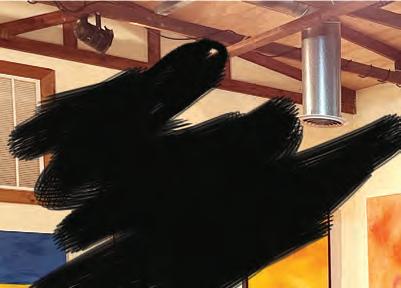

Welcome!
Announcing the grand opening of the “Gallery at Long Island Studios”

Friday, April 14th 5:00 – 8:00 PM


You are invited to view the Samara Anjelae Collection of exquisite abstract and Healing Hands paintings as well as Robin Hamon’s profoundly unique sculptures. Prepare for an evening of spectacular music, light refreshments, and art; all under the roofs of Long Island Studio located at 2566 Palumbo Drive in Lexington. Opening night will feature world-renowned and KY Hall of Fame blues artist Tee Dee Young and new age pianist Kory Caudill, currently coming



unique sculptures art; all under the roofs of Island Studio l world-renowned and KY Hall of Fame blues a off a world tour for this event.
or an evening of spectacular music, light refreshmen 566 Palumbo Drive in night will ee Young and new age pianist Kory Caudill, currently






Georgia Green Stamper is just a woman from a little old place called Natlee.
“Just.”
As if place can define us.
Stamper would tilt her head a bit to the side, steeple her fingers, and say, “Well, doesn’t it?”
Natlee, about 13 miles southeast of Owenton in Owen County, does define Stamper, as much as Ashland, Lexington and Georgetown—some of the other places she’s called home.
Place has a way of rounding edges and creating new ones. Place defines, refines, shapes, grows, stunts and sustains us. Place connects people and stories.
But Natlee is more than a small speck in the road; it’s the place that held seven generations of Stamper’s family. Seven generations hold lots of stories. Georgia’s daddy used to say, “From Natlee, you can go anywhere.” Stamper and her words did just that.
In January, Stamper’s latest book, Small Acreages: New and Collected Essays, released by Shadelandhouse Modern Press in May 2022, was longlisted for the 2023 PEN/ Diamonstein-Spielvogel Award for the Art of the Essay.

Nominees for the annual award must meet certain criteria. According to the PEN America website (pen. org), the category was open “for a seasoned writer whose collection of essays is an expansion of their corpus of work and preserves the distinguished art form of the essay.”
Stamper’s work was nominated by Virginia H. Underwood, the founder and publisher of the Lexington-based independent publishing house Shadelandhouse Modern Press. Underwood has known about the PEN America awards since her days at Berea College.

“I have had a personal and professional interest in issues and advocacy for freedom of expression and the literary arts throughout my
life,” Underwood said. “After I founded Shadelandhouse Modern Press, I began to view the PEN America Literary Awards and the submission guidelines for each genre through the eyes of a publisher.”
Underwood actively looks for opportunities to put her authors forward for awards and recognition. She said that her press “is committed to the publication of authentic, artistic and compelling books for adults and young readers and to the discovery of outstanding new voices and the advancement of writers at all stages of their careers.”
In the spring of 2022, Underwood knew she had to submit Small Acreages for consideration.
“Immediately, my heart began to beat a bit faster because I sincerely believed Stamper and Small Acreages were a perfect match for the submission criteria for the literary award,” Underwood said.
She was right.
Out of 1,744 entries in 11 different
categories, Stamper’s work garnered enough attention to be grouped with the other longlist nominees, including essayists Jessi Klein, Jhumpa Lahiri, Frances Mayes, Peter Orner, Suzanne Roberts, David Sedaris, Laurie Stone, Judith Thurman and Alison Townsend.
Good company for a woman from a little old place like Natlee.
The daughter of a science teacher and a farmer, Stamper wrote poetry during high school and college. At Transylvania University, she reached what she calls an epiphany moment.
“One of my problems as a writer is that I’m a much better reader than I am a writer. I’m a much better discerning critic than I am a writer,” she explained. “I was reading something wonderful by somebody wonderful in one of my classes, and I thought, ‘Well, what’s the point? I can’t do this.’ ”
If she couldn’t write good poetr y, she decided, she wouldn’t write poetry. Stamper turned to fiction. Then came marriage to a husband whose “intense career took him literally all the way around the world” and three children whom she adores.
During those years, Stamper wrote but never seemed to be happy with the results. “As my friends say: I didn’t sit in the chair long enough to get it to a better place,” she admitted.
After what she described as “a whole big chunk of life,” Stamper and her husband, Ernie, moved back to central Kentucky when Ernie took a position at Georgetown College.
At the college, it was traditional for sitting presidents to open their home for tea and fellowship. The president at that time was Dr. William H. Crouch Jr. He and his wife, Jan, hosted one such event, where Stamper chatted with Dr. Gwen Curry, a longtime professor in Georgetown’s English Department.
“All of a sudden, these words came out of my mouth, and I still can’t hardly believe I had the gall to ask her this. I just said to her, ‘Would you like to form a writing group with me?’ Me! Who had never written
anything much to speak of,” Stamper recalled. “And without missing a beat, she said she would love to and would have it at her house.”
Curry rounded up three or four other women writers, one of whom was Kentucky poet Sherry Chandler. Chandler, also from Owen County, introduced Stamper to the writing community at Lexington’s Carnegie Center. Through the Carnegie Center, Stamper rubbed literary elbows with accomplished author Leatha Kendrick, who would become Stamper’s mentor and friend.
But it was listening to Tony Crunk, another Kentucky native, speak on the importance of place and telling the stories of that place that snagged Stamper’s heart and solidified a purposeful storytelling in her.
“[Crunk] said, ‘It’s a good thing to write from a sense of place, and no one else is going to write about your place if you don’t do it,” Stamper recalled.
To her, the timing of the message was perfect.
Stamper’s mother was in declining health and had limited mobility. Being an only child, Stamper spent the time necessary to meet her mother’s needs. And she listened.
“I think there’s a tendency of many people, once they get a little older, they want to go back through and reflect on their lives,” Stamper said. “Mother certainly did. She wanted to go back through everything that ever happened.”
Those stories became gifts that eventually were published in the Owen Count y News-Herald in a column titled “Stamper: On My Mind.”
The stories took off. It turned out that people loved hearing about a little old place called Natlee and the people who lived, loved, worked and died there.
At around the same time, Stamper approached public radio station WUKY in Lexington. She read her work, and the station broadcast it in the local time slot on “Morning Edition” and again in the local afternoon time slot on “All Things Considered.”
Her first collection of essays, You Can G o Anywhere: From the Crossroads of
the World, was published in 2008 by Wind Publications. Her second collection, Butter in the Morning: Pieces of a Kentucky Life, also published by Wind, followed in 2012.
“I have been bold. And lucky. And at the same time, I’m very insecure as a writer,” Stamper admitted. “It’s hard to write. People who say writing is easy—I’m convinced they only write first drafts. If you really write and revise something to the point of completion, it’s hard.”
What began as a way to preserve her mother’s stories has not only given Stamper a way to speak about her own small acreages, it also has connected her acreages to stories of lands far from here. People from all across North America write to tell her how one of her characters sounded just like a member of their own family. One letter writer allows herself to read only one story a night because she doesn’t want the book to end.
“Different readers take different things from the same words, and it may not be the message I think I’m sending,” Stamper said. “You can’t just tell a cute story. What it comes down to is, why is it important that I remember this story? I think families in Kentucky—families in all areas of the country or the world—tend to repeat stories across several generations. Why? You start thinking about it; you finally get to it.”
In the end, it’s the story that resonates with readers. The story of place and people and life.
While Small Acreages didn’t make it past the longlist to the finals, Stamper still considered the longlist nomination a win.
“It’s a win for older writers. It’s a win for independent presses and independent publishers. It’s a win for Kentucky regional writers,” Stamper said. “I think it could be an inspiration for many people who are quietly writing, working away in their home office or their basement on a project.”
It’s a win for little old places like Natlee and for every story just waiting to be told. Q








Felton “Skipper” Snow was born in Alabama but called Louisville home. And the city is proud to claim him.
Born in 1905, Felton moved with his family to Louisville when he was 10.
As a young adult, Felton showed great athletic promise and began playing for Louisville Negro League baseball teams in 1929. He first played for a team in the Negro Southern League, then moved to the Negro National League in 1931, when he played for the Louisville White Sox.
Over the next two decades, Felton played and managed in the Negro Leagues. His primary position was third base, but during his career, he played every position except catcher and first base. He was known for his strong throwing arm.
Snow played on several different teams. He was first listed as a manager in 1936. He managed the Washington Elite Giants, for whom he also played. Although that was the first year he was listed as a manager, it has been said that he actually began managing that team a few years earlier while actively playing.
After his playing days ended, Felton managed teams in the Negro League until 1946. He then managed minor league teams until 1949.
Felton returned to Louisville after retiring from baseball. He worked at the Charleston Armory in southern Indiana until a workplace injury forced him to retire. He then worked at a barber shop in the Saint Matthews area of Louisville.

Snow died on March 16, 1974, and was buried in an unmarked grave at Eastern Cemetery … unmarked until recently.
Billy Snow and his wife, Chavantee, call Louisville home. Billy has lived in the city his entire life. Chavantee moved to Louisville to marry Billy after meeting him in her home country, Thailand, where Billy was stationed as a serviceman in the United States Air Force. For 28 years, they owned Thai Café, a small Louisville restaurant that served Thai food from Chavantee’s authentic recipes. Billy is Felton Snow’s nephew, and like his famous uncle, Billy both worked at his place of employment (his restaurant) and managed it. He and his wife opened the restaurant after he retired from many years of working for the U.S. Postal Service.
Billy has fond memories of his uncle. When Billy was a child, Uncle Felton coached his Little League team along with Billy’s father. Billy remembers his uncle telling him and the other boys on the team to keep the bat off their shoulders. Rather than resting the bat on top of their shoulders like young boys tend to do, Felton instructed the boys on his team to lift the bat up off their shoulders, lean forward to lean into the pitch, and be ready when the pitch came.
Billy shared that Felton coached the 1945 Negro League East-West All-Star game in which Jackie Robinson played. Robinson signed with the Brooklyn Dodgers farm team in 1945 shortly after that game. It was another two years before Robinson moved to the major leagues.
Billy said that his uncle always felt he had played at least a small part in helping Robinson get noticed. Billy related that his whole family became Dodgers fans after Robinson broke the color barrier and made the team. They often traveled to Cincinnati to watch whenever the Dodgers played the Reds.
In the summer of 2022, a few groups in Louisville and some anonymous private donors pooled their resources to purchase a beautiful graveside monument for Felton Snow’s grave. The groups included the local Society for American Baseball Research chapter, Louisville Urban League, Louisville Bats baseball team, and Louisville Slugger Museum & Factory.

A ceremony was held on Sept. 1, 2022, more than 48 years after Felton’s death, at his gravesite. The new monument detailing his contributions to baseball was unveiled. The following day, Felton was recognized at the Louisville Bats’ home game as they retired his jersey number, No. 2. A sign with the image of a large baseball with No. 2 in the center hangs on the wall of Louisville Slugger Field next to similar signs with other retired numbers. Artist Gary Cieradkowski (whose illustration graced the cover of Kentucky Monthly’s December 2022/ January 2023 issue) created a baseball card in Snow’s honor.
Billy Snow proudly threw the first pitch at that game in honor of his beloved uncle. Billy was surrounded and cheered on by family members who had traveled many miles to attend the ceremony and game as well as his many friends.
Felton Snow played and managed teams in the Negro League for 20 years. During his time in baseball, he played with or managed some of baseball’s greatest players, including Satchel Paige, Robinson and Roy Campanella
Last September, the city paid its respects to this great baseball player and manager and showed his family its gratitude. Q


Explore our treasure trove of regional records: manuscripts, books, historical records, & etc.

Discover your family origins: genealogical files, business legders, marriage records, & more
Research famous and everyday historic figures: Daniel Boone papers, Sanborn Maps, Simon Kenton collection

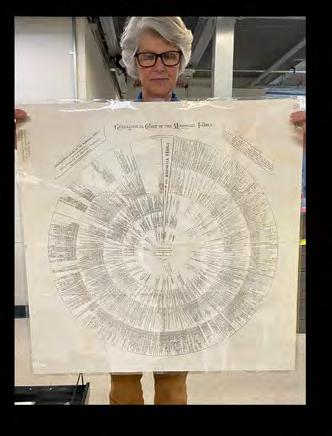
Understand historical events and locations: KY maps, Church histories/records, emancipation deeds, & etc.




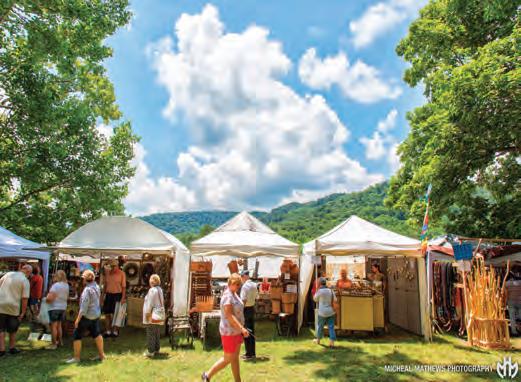








Letters may be edited for clarification and brevity.
I am looking for information on Hugh W. Gaunt, born in 1895, and his sister Anna E. Gaunt, born in 1900. Their parents were Francis Albert Gaunt, 1861-1945, and Rebecca Ann Wigginton, 1870-1912.
Any information is appreciated. My number is 502.417.1464.
Jeff Mueller, Mount Washington
Does anyone remember or have a picture of the D BOON tree located in Trimble County, off Providence Road at the top of the hill near the entrance to the old farm on the north side of George’s Creek?
A longtime Kentucky Derby season event,
Pegasus Parade
1959
Kiesz-Hubbard, née Pat Metcalf. Kiesz-Hubbard, who
in Leesburg, Florida, is in the front row, facing the camera. “Before the parade started, there was a large clap of thunder, and it started to rain,” she wrote. “The crew got us off the float in time, and within minutes, the rain came down so hard, the float collapsed. We, the girls, never made the trip down Broadway.”
Loved the article on William H. Townsend (February issue, page 56).
Joe Murphy, a businessman from Harrodsburg, was Mary Genevieve Townsend’s second husband. Murphy’s first wife, Venus Ramey, was crowned Miss America in 1944. Joe and Venus Murphy had a son, Wally

Mr. Murphy also was quite the historian. He lived at Helm Place until he died.
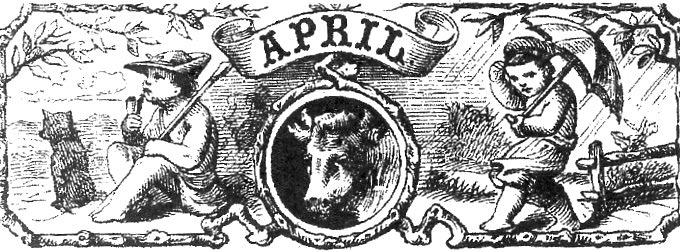
Helen Dedman, Harrodsburg
Historians say Daniel Boone wasn’t there at that date in the 1700s, but I saw the ancient beech tree near a spring with the carving on the large limb 50 years ago. My dad was born in 1902 and spoke of its authenticity. Rangers also say there are no mountain lions in Kentucky and no trace of Native Americans at Carter Caves State Park, but these sure make good conversation starters.
I was born in Carroll County in a pre-Civil War log home with handchiseled stone fireplaces and blue-steel rock mantels. In the seventh grade at English Grade School, I was punished for carving on my wooden desk by Principal Roy Searcy, a fine educator. At 75, I’m still carving on the state instrument, Kentucky’s dulcimer.

Warren A. May, Berea
P.S. Who’d a thought that coal cinder I hit with my homemade hickory bat would have pelted past the superintendent’s wife through the open window of that same classroom! But that’s another story …
Please send letters to Editor Deborah Kohl Kremer at deb@kentuckymonthly.com or mail to Deb Kremer, Kentucky
PO Box 559, Frankfort, KY 40602.
After the U.S. Department of Transportation recently awarded Ohio and Kentucky $1.6 billion in funds to improve the Brent Spence Bridge, there was been renewed interest in the bridge’s history.



The bridge is a rare example of a doubledecker, cantilevered truss bridge. It carries Interstates 71 and 75 across the Ohio River between Covington and Cincinnati. The top is Kentucky-bound, while the bottom deck carries Ohio-bound traffic. This bridge is one of the few remaining bridges spanning the Ohio River that is 50 years old or older. The bridge, a late example of a cantilever truss bridge with a 1963 construction date, is historically significant.
It was named for Kentucky’s longest-serving member of Congress at the time, Brent Spence (Dec. 24, 1874-Sept. 18, 1967). The Newport native began his political journey when he served in the Kentucky Senate (1904-08). He served as Newport’s city solicitor from 1916-24. In 1930, he was elected to the United States House of Representatives and served for more than 30 years before retiring in January 1963. He retired at 88 and was one of the oldest members to serve in Congress.
When the bridge opened in November 1963, it carried three lanes of traffic each way across the river. In 1985, the emergency shoulders were eliminated, and the bridge was re-striped with four lanes traveling in each direction, increasing the traffic capacity by 33 percent and earning the bridge the determination of being “functionally obsolete” due to carrying more traffic than it was originally designed to carry.
The bridge celebrates its 60th birthday in 2023, which is significant because it previously was considered ineligible for listing in the National Register of Historic Places. According to HistoricBridges.org, the bridge should be reevaluated and considered as an increasingly rare example of a large cantilever truss bridge, particularly unusual for its double-deck configuration. The bridge’s trusses retain good historical integrity with no substantial alteration to the original materials, design or appearance.
The bridge was designed by the engineering firm Modjeski and Masters of Mechanicsburg, Pennsylvania. Renowned bridge engineer Ralph Modjeski died before the Brent Spence Bridge was designed, but Modjeski and Masters remain in business today.
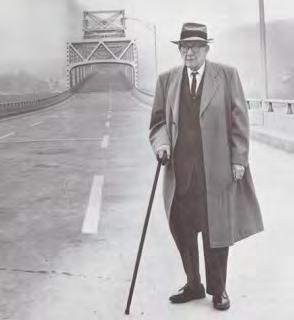
The future of the bridge was uncertain for many years, but Kentucky Gov. Andy Beshear, Ohio Gov. Mike DeWine and U.S. Senate Minority Leader Mitch McConnell announced on Dec. 29, 2022, that the Brent Spence Bridge Corridor Project was awarded the federal funding grants, giving the green light for the project to move forward.
With funding secured, groundbreaking on the project is anticipated for late 2023, with hopes of completion in 2029. Plans call for the construction of a companion bridge to the west of the existing bridge as well as improvements to the current bridge and the roadway network that ties into each river crossing.
A trip to our cellar was like going to the grocery. It held hundreds of jars of sliced apples, apple sauce, green beans, pickled beets, corn, sliced or halved peaches, pear halves, kraut, blackberries, blue damson plums, tomatoes, tomato juice and cucumber pickles.

There were jars of pork tenderloin, fried sausage in jars turned upside down as the hardened grease sealed the jar extra good.
Cardboard or wooden boxes and bushel baskets and sacks held onions, turnips and potatoes—both Irish and sweet. I remember sulfured apple slices that I didn’t like. Pinto beans were bought in large quantities. Apples were always there by the bushels. Dad ate several raw apples daily. He bought prunes in wooden crates, and stewed prunes always were on the table.
Dad often was called the mayor of Poplar Plains. He liked to play checkers and visit the store each night to keep up with events and hear about the neighbors—not gossip, just concern, as everyone helped everyone in those days.
Dad chewed tobacco. He was neat about that. He grew his own tobacco, selected the best and biggest leaves. On a rainy day, when the tobacco was cured or dry, he would sit and smooth out leaves across his knee. When several leaves were smoothed and stacked, he folded them in half, then twisted them together. He made many twists, and they lasted until the next tobacco season. He bought squares of chewing tobacco that were sweetened and mixed together a small amount of homegrown and the bought together for a chew.
Dad told us how his mother had made his clothes. I wish I had listened more attentively and asked more questions. Our grandmother grew her own sheep and sheared their wool, which went through several steps such as carding. That’s where I didn’t listen. His jeans were made from this wool, and he was so proud of them.
Mom was the gardener. She believed in planting by the signs of the moon and always had a beautiful garden. If I remember correctly, she canned 700-800 quarts and half gallons of fruits and vegetables each year. There was never a time a full-course meal couldn’t be served without going to the grocery. Often, a hen or rooster was killed and dressed. Chicken and dumplings were so good. Of course, Mom could always open a jar of meat. There was never beef,
which I later wondered about. Dad liked to fish, so in the summer and when he was lucky, we had a fish dinner. Cornbread was good with that. We had hot bread with almost every meal. It was a treat to have light bread. Even though it was only 10 cents a loaf, we didn’t have it often.
There was always milk to drink. It was poured into crocks so the cream could be skimmed off easily. Cream was used to cook rich pies and other foods. Cream also was churned to make butter. I loved to churn. Cottage cheese was often made. The milk first soured and then clabbered. Hot water was poured over the clabber. This curdled and was strained through a sieve or cheesecloth. After the cream was churned, the milk that was left was buttermilk.
Our mom made homemade lye soap used in the laundry. Clothes were scrubbed on a washboard and hung to dry. We had a rain barrel under the eaves of the house. This was used to wash clothes and was wonderful for shampooing hair and bathing.
We had our own cows, hogs and chickens. Dad saved eight hogs each year to kill for food. In the wintertime, there would be a hog killing. A huge scalding pan was filled with water and a great fire lit under it. The water had to be boiling. A scaffold of sorts was built nearby. The hogs were shot, I think, and then stuck so they bled. They were cut open to remove the intestines and organs and scalded, then hung on the wooden scaffold. They were then scraped with a razor-sharp knife and cut into sections. All hams and shoulders were seasoned with salt and left to cure in the smokehouse. The next year, we had delicious country hams. Fried ham for breakfast was common then. The parts of the hog that didn’t make anything else were used for sausage. It was ground at home, seasoned with herbs—especially sage. It was fried and put into jars. Some was put into homemade cotton sacks. Spareribs also were canned. Backbones were cooked, and potatoes were added. Neck bones were cooked the same way. Tenderloin was good. Pork chops were canned. Head sauce was made. Liver was canned, and sides of bacon were salt-cured. The tail and snout were pitched along with the internals. We did not have chittlins, and maybe we missed a lot there.
Life wasn’t a bed of roses, but when I look back, it wasn’t bad. Life was simple, and that was good.
After my older brothers Jason and Clifton had left home in Knox County—with Jason being called back to his job in Detroit, and Clifton having joined the United States Army— our family was faced with a dilemma. My dad, Robert Jones, had a ruptured stomach, a weak heart and diabetes. Our only source of income was our tobacco crop, which was sold in late November or early December. That 1950 tobacco crop was the only means of survival for our family at the time, and there were eight children to feed, clothe, and send to school. The crop usually brought around $500. That money had to last our family a whole year, buying salt, sugar, flour, meal, lard, kerosene, etc., and that was after Dad had paid off the bill owed to the general store from the previous year.
I will never forget the sadness in my dad’s face the day Jason got the letter from the post office saying that he had been called back to his job and Clifton quietly announced that he had volunteered for the Army. In a single moment, Dad seemed to age 10 years. Two of his sons were leaving home at the same time, and there I stood, a little 8-year-old boy, looking up into my dad’s pale face as he said goodbye to my brothers, taking the reins of our old horse in his hands, and turning his face toward the tobacco field that had to be plowed.
My heart broke as I watched my brothers walk away and watched my dad take the handles of the plow in his hands, with the reins wrapped around his neck. I couldn’t help but notice how Dad and our horse, Ol’ Silver, worked so well together. As I watched, I listened, and slowly followed behind, watching the plow turn up the soil in a rhythmic motion. Somehow, watching my dad plow that field made me forget that two of my brothers had just left. There was something about the way my dad talked to Ol’ Silver as he plowed that made me want to plow a field the way he did. At the end of each row, Dad yelled, “Whoa, Silver,” and the horse stopped as Dad lifted the plow out of the ground, kicked the lever that turned the moldboard of the plow, and yelled, “Haw, Silver.”
Ol’ Silver obeyed immediately, turning to his left, as Dad sunk the point of the plow into the ground, gently slapping the reins, whistling and commanding, “Come up, Silver.” Looking over the field after it was about half plowed, I couldn’t help but notice how straight and even the field appeared—every row perfectly straight and the same depth. Without my dad telling me, I watched, listened and learned how to talk to a horse. “Gee” meant go to the right, and “Haw” meant go to the left. “Come up” meant go forward, and “Whoa” meant stop.
As I watched my dad plow row after row, I saw he was nearly exhausted, his overalls and dingy shirt wet with sweat. He was panting for breath as he took off his old faded hat and began to fan himself, standing halfway in the middle of the plowed field. I stepped up beside him, hearing him breathe heavily, and took the reins from around his neck, asking him, “Daddy, why don’t you sit down and let me do the rest?” To my surprise, Dad smiled down at me and replied, “OK, son. I’m gonna let you try it, but first I want to show you something.” I watched Dad lay the plow down on its side in the plowed dirt and walk up to the front of Ol’ Silver, gently patting the horse’s neck and speaking softly to him as he took the bit out of the horse’s mouth, pulling the bridle off. He wrapped the reins together, handed the bridle and reins to me, and told me to take them to the edge of the field and leave them there. I had learned a few things about my dad, and one of those things was to never question his wisdom or his skills as a farmer. Now, I was about to learn never to doubt his wisdom as a father.
There stood Ol’ Silver, with nothing except the harness on his back, as Dad picked up the plow and told me to watch him plow one row before giving me the plow. I stood there in silence, watching with a deep sense of pride and respect, as my dad and Ol’ Silver plowed together with no reins, only my dad’s voice. Once in a while, Dad said, “Gee, Silver,” and the horse immediately took a step to his right. When Dad said, “Haw, Silver,” the horse obeyed instantly, taking a step to the left. Looking back at the field, the row was just as straight as all the other rows. At the end of the row, without any reins to guide him and without a bit in his mouth, again the simple command from his master, “Whoa,” was all Ol’ Silver needed. Such was the relationship between my dad and his horse, a creature that understood his master’s voice so well, he needed no bit or bridle and no leather reins to slap his backside.
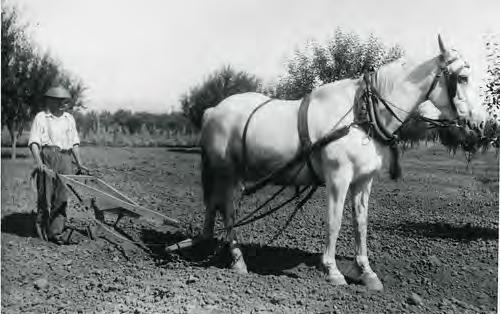
Dad smiled at me, telling me to do as he had done. I stepped in front of Ol’ Silver, patting his neck and face, speaking to him softly, letting him hear my voice. I picked up the old plow and raised the handles as high as I could, pointing the blade downward. I looked over at my dad, lying in the shade of the big oak tree, fanning himself with his hat, and listening to me give the commands to our horse. After I plowed my first row, I looked back at the field, my little heart swelling with pride as my dad yelled, “Not bad for a greenhorn, boy, not bad at all! Now, ye only got about 10 more rows to go.”
Along the path of my life, I looked back upon the many lessons my dad taught me. I began to realize something many folks seem to miss: Dad wasn’t just teaching his son how to plow a field; he was teaching his son the simple truth of obedience—obedience to the Master’s voice. When and if we ever reach the point of spiritual maturity where we hear our Master’s voice and obey without hesitation, we won’t need any bits in our mouths,or any leather reins. When God says, “Gee,” we take a step to the right, and when He says, “Haw,” we take a step to the left.When He says, “Come up,” we know to go forward, and when He says, “Whoa,” we stop. Who knows? Perhaps someday, when all the plowing is done, we may hear the Master say, “Not bad for a greenhorn, not bad at all.”
Before big industry discovered Boone County, a different kind of production was happening in Florence, where the Northern Kentucky Industrial Park now stands. Highland Stock Farm, a 550-acre Thoroughbred breeding and training facility, was located at the southeast corner of what is now Dixie Highway and Industrial Road. The owner of Highland Stock Farm, Jerome “Rome” B. Respess, was a Boone County native, born in 1863.
The Respess family was well-respected in the area, but things began to unravel after the death of Rome’s mother, Catherine, in 1875. The decision was made that his younger sister would be raised by an aunt, while Rome and his two brothers stayed with their father, William, a Civil War veteran who never remarried. It’s likely the behavior of the Respess boys was not always what their mother would have wanted. As teens and young men, they began to get
into trouble, mainly drinking and fighting. These activities escalated in 1887, when Rome and one brother were involved in what was described as a “riot” in an Erlanger barroom. Rome, who was carrying a weapon, took a bullet to the arm during the fray. Another bar fight brought legal trouble in 1888, but his attention began to shift around this same time, which may have saved him from life as a ruffian.
As a young man, he trained and showed Saddlebreds at local fairs, but in 1887, he turned his attention to horse racing. He invested in two fillies, Miss Lou and Mary Lou, who showed promise but were not successful enough to fully hold young Rome’s attention. He was not discouraged, though. He soon discovered there was money to be made in “pool rooms,” which had nothing to do with cues, balls or tables. Rome became a bookie, running betting “pools” in bars across northern Kentucky.
Profits from his betting pools allowed Rome to begin to expand his ownership of horses. He bought acreage in Boone County and leased a farm in Woodlawn, Ohio. He began to take an interest in breeding and training his racehorses, and he had a natural affinity for both. As he earned his chops as a respected horseman, Rome was keeping an eye on the money to be made “on the side.”

In the 1890s, Respess’ betting operations became the focus of several raids that brought indictments for “nuisance in running pool rooms.” In 1897, one case went all the way to the Kentucky Court of Appeals, where Rome’s conviction and fine were upheld, though he did no jail time. Another indictment came in 1898, followed by a civil lawsuit brought by a man who had lost heavily in Respess’ gambling operations. Similar cases were brought as late as 1907.
Legal woes aside, Respess was good at turning a dollar, as evidenced by a theft reported in 1903. An apartment he kept near the track in Chicago was burglarized, and Respess reported a loss of cash and diamonds worth more than $4,000 ($136,000 in today’s economy). The loss didn’t slow him; he continued to grow his reputation and empire. Rome began breeding and training champion racehorses at his Ohio stud farm around the turn of the 20th century. His place in horse racing was secured by the success of a horse named Dick Welles, purchased as a 2-year-old in 1902. Dick Welles, who was named after the father of actor Orson Welles, was a natural sprinter that set records, including two world records in 1903. A groom employed by Respess had such confidence in his charge that he once sold his own shoes to place a bet in the horse’s favor. Dick Welles frequently was compared to the famous Man o’ War and was called the “swiftest thoroughbred ever seen on the American Continent” by the Lexington Herald. Sadly, the horse suffered an injury in 1904 from which he never fully recovered and was retired to stud the following year.
His star’s retirement only brought more success to Respess as a breeder. Dick Welles passed on his speed to his offspring and ranked as a top-10 American sire for several years. In 1906, one of his sons, Wintergreen, was foaled at

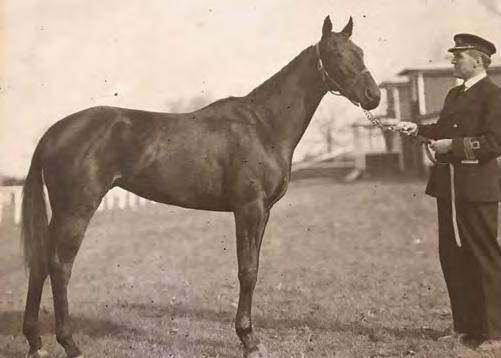
“The only thing more important than the horse race itself is the sport of people-watching.” Hunter S. ThompsonRespess’ Top, a cigar box bearing Dick Welles’ likeness but with his name mispelled; above, a son of Dick Welles, Billy Kelly was bred by Respess. He had 39 career wins from 69 starts and finished second in the 1919 Kentucky Derby behind Sir Barton, who went on to win the Triple Crown; right, Respess in 1937.
Woodlawn, Ohio, farm. Respess reportedly took one look at the foal and predicted that he would win the 1909 Kentucky Derby. His confidence in Wintergreen did not waver as the young horse grew into his speed. A few days before the 1909 Derby, Respess met actor Will Rogers. Rome gave him a tour of Churchill Downs and a picture of Wintergreen. Rogers wrote home to his wife that he was sure this horse would win the Derby, and he was correct. Wintergreen easily won in a field of 10 competitors that year.

Respess’ success in racing continued for decades, and he moved his complete operation to Highland Stock Farm in Florence in 1918. At its height, the farm was equipped to house 140 horses and boasted nine bright white barns. On average, there were 50 foals born there per year. Dick Welles lived out his final years on the farm, where he died in 1923. Respess had him buried on the farm, his grave marked with a proper monument, and a brass plaque touting the horse’s accomplishments and bloodline hung in the main barn. The farm was a symbol of Respess’ success, which continued to grow. Even Hollywood studio mogul Louis B. Mayer was a client.
Tragedy struck the Respess family in 1932, when Rome and wife Rena’s only child, Jerome Jr., died in a car accident on his way to Louisville on Derby Eve. The sophomore at the University of Kentucky was traveling to Louisville to help prepare a horse for the race when the accident occurred. Though he continued in the industry, the cloud of loss followed Rome to his own dying day in 1939—seven years after he lost his son.
Respess’ storied career included not only breeding and training noted racehorses but also ownership or interest in several racetracks. He was a partner in Latonia Racetrack in northern Kentucky and Chicago’s Harlem Track. He is credited with building Essex Park in Hot Springs, Arkansas, and held an interest in City Park in New Orleans. He also became part-owner of a brewery.
This photo of Kentucky & Tennessee Railway 2-8-2 #11 was taken on Sept. 26, 1954, at Blue Heron (McCreary County). In the photo, the #11 is pulling a National Railway Historical Society fan trip.
The locomotive was built by the American Locomotive Company at its New York-based Brooks Locomotive Works in 1922 and sold to the K&T Railway. The K&T Railway was owned by the Stearns Coal & Lumber Company, founded in 1902 by Justus S. Stearns of Michigan. Stearns Coal & Lumber controlled 200 square miles of land in McCreary County and Scott, Fentress and Pickett counties in Tennessee.
The Kentucky & Tennessee Railroad was incorporated on May 22, 1902, to haul out coal and timber. By 1903, the Southern Railway to Barthell had been opened 3 ½ miles from Stearns.

Top, Wintergreen, the first and, to date, only Ohio-bred to win the Kentucky Derby, is pictured in the Churchill Downs winner’s circle in 1909; above, Respess’ Highland Stock Farm. (Courtesy of NKYViews.com)
After his death, Respess’ widow sold Highland Stock Farm to the Holton family, who filled the main barn with their show horses. It later was sold to the Northern Kentucky Industrial Park.

It soon was discovered the Kentucky & Tennessee Railroad articles of incorporation did not allow it to issue enough bonds to finance expansion. To rectify this, the Kentucky & Tennessee Railway was incorporated on Feb. 8, 1904, and the assets of the Kentucky & Tennessee Railroad were sold to the Kentucky & Tennessee Railway on March 28, 1904.
At its longest, the Kentucky & Tennessee Railway ran to Bell Farm in McCreary County, where it interchanged with the Stearns Coal & Lumber’s private 25-mile-long logging railroad.
After the 1920s, the mines and the logging declined, and traffic followed suit.
Today, the area is in the 125,000-acre Big South Fork National River and Recreation Area, and the Kentucky & Tennessee Railway is now the Big South Fork Scenic Railway that hauls tourists from Stearns to the restored coal tipple and town site at Blue Heron.
Abeautiful horse racing facility in Kentucky doesn’t sound like anything out of the ordinary. In fact, during the mid-1920s, Kentucky had popular tracks in Covington (Latonia), Lexington (The Kentucky Association Racetrack), and the grandest track of them all, Churchill Downs in Louisville.
If someone was to say that there was a track similar in scale to the popular ones listed above, and that the track was in eastern Kentucky, that would sound out of the ordinary. In fact, people might reply to such news back then with, “Sure, in your dreams!”
Raceland was indeed a dream of track developer, breeder and trainer John “Jack” O. Keene. Keene and his associates, under the name Tri-State Fair and Racing Association, purchased around 260 acres in Chinnville in Greenup County. It was several miles east of the city of Greenup and about 14 miles west of Ashland, near the Ohio River. Eventually, Chinnville would be named Raceland after the track.
Keene’s plan was to build a track spectacular enough to attract crowds from Ohio, eastern Kentucky and West Virginia. That plan would offer prize money comparable with that of the larger tracks across the state and country. It was called the Million Dollar Oval because of the large amount of money that it cost to construct and the vast sums that changed hands.
Keene commented to reporters concerning the track, “It is the only track that would come anywhere near the location, beauty and artistic design of the track at Saratoga in New York.”
After several delays, the first Raceland Derby took place on July 19, 1924. Black Gold, who recently had won the Kentucky Derby, raced that day and came in third.

Keene’s idea seemed to have paid off because approximately 27,000 patrons attended that day. Many traveled to the track from their hotels in Portsmouth, Ironton, Ashland and Huntington. The journey would have involved taking a ferry across the river and catching special trains to Raceland. A spur line was set up from the C&O line to within several yards of the track. Vehicles lined the roadways from east and west. The grandstand and surrounding area were standing room only.
The owners, trainers and staff at Raceland were deeply impressed with the environment of the track. It was hard to believe that this track was in eastern Kentucky and not in the Bluegrass region of the state.
To those who attended the races over the next couple of years, everything looked to be normal. There were times when the grandstand was nearly full and times when it was less than half full. Many of the larger popular tracks experienced such highs and lows from time to time. But Raceland was in debt, and by continuing to run races, the amount of debt continued to build.
Management wanted Raceland to be as popular as other tracks in the Commonwealth. Like those tracks, Raceland was required to pay a daily license fee, which ran around $2,500—a hefty sum. There was a bill in the state legislature that proposed lowering the fee to $500 a day for smaller venues like Raceland and Dade Park, but it would come too late.
A combination of factors led to the demise of the track. The license fee, poor attendance due to weather, and daily payouts caused the track to fall behind on state taxes and mortgage payments. There were stories that local churches had a share in causing some of the financial woes Raceland experienced.
By the end of 1928, horse racing at beautiful Raceland was over, and the track was sold. A Portsmouth Daily Times article from April 1929 stated, “Keene had built one of the

best racetracks ever, but he built it in the wrong place…”
The track would see one last race on August 3, 1930, called the 100-mile Derby. Instead of using horses, it was run by automobiles. Bill Schep of the famed Pittsburgh Four Horsemen won the race.
By the mid-1930s, Keene had made several attempts at obtaining funding to bring horse racing back to the track, but he was not successful. The track was sold in 1937, the grandstand was demolished, and official track buildings were turned into private residences.

Keene’s dream track in eastern Kentucky had come to an end. But an equally beautiful dream track was constructed in Lexington in 1936 on property Keene owned. Keeneland Race Course is one of the most successful tracks in the world and is listed as a National Historic Landmark.


This copper engraved plate is one of many postcards available of historic, scenic and local interest.
Copper has been used by humans longer than any other common metal, including silver and gold. More than 6,000 years ago, Egyptians fashioned the metal into a variety of useful items.
The back of the postcard reads simply: “Kopper Card.”
Today, several Raceland track structures serve as residences. A couple of the old stables are still around, as is the old jockey quarters. There is a large Kentucky Historical Highway Marker on U.S. 23 commemorating the history of the nearby track.

The view on a satellite map app shows an oval-shaped outline just west of the jockey quarters. That is all that is left of the track that once was referred to as the Million Dollar Oval and Keene’s Raceland dream.
For more information on Raceland, check out the author’s 2021 book, Raceland: Eastern Kentucky Horse Racing History.

 By Mark Mattmiller, Cynthiana
By Mark Mattmiller, Cynthiana
It seems that whenever there is reporting on the tobacco industry in Kentucky, the themes are always the same. Smoking rates, our inability to fight the diseases associated with the leaf, the impact of the tobacco lobby, and bans on indoor smoking are the topics most likely addressed. What is not tackled is the cultural impact that came with the demise of the USDA tobacco support program in 2004. To small farmers, it dealt a staggering blow.
The first settlers moving into Kentucky usually were men traveling alone. Their intentions were to find a place to clear and farm, build a cabin, and send for their families later. They needed little: their pack horse, a rifle, gunpowder, lead, axe and adze. Knives, steel traps, rope, iron pots, salt and seeds also were brought. Later, after the arrival of their families, a patch of corn and a garden were put out. Some tobacco usually was grown, but it was only a few plants for personal consumption. Those early Kentucky farmers lived lives of isolation and subsistence. They were dependent upon little more than what they could get through their own initiatives.
Food was not a big problem for the earliest residents of Kentucky. Sources of protein were almost unlimited. A look at the map today reveals just how many places were named for elk, deer, hickory and walnuts. The streams were teeming with easy-to-catch fish. There was little need for a cash crop, and that need usually was met by the enterprise of trapping. The furs of the beavers, otters, minks and muskrats were traded for staples at the trading posts and at stores that soon were in the settlements.
As more people settled in Kentucky, the availability of game and the fur-bearing animals to trap decreased. It became increasingly more difficult to find both. This combination of more people and fewer available essentials put a pressure on the inhabitants: they had to eat. Cash was needed to both acquire the necessary tools to farm and preserve their food and to buy what they couldn’t grow. Tobacco filled the void.
Tobacco as a crop was especially accommodating to the vast woodlands of Kentucky, since it required small patches that could be hacked out of the forests. A large yield per acre, as well as the close care and supervision required, always confined tobacco to a relatively small plot of farmland. The small hill farms that were prevalent in the areas north, south and east of the inner bluegrass were perfect for tobacco production: The flat land for crops was mostly limited to ridge tops and narrow creek bottoms. By the 1860s, almost every farm in the area was producing tobacco, and the nature of the leaf and what it took to produce it had a profound influence on life in rural Kentucky.
Wendell Berry brought the word “neighboring” to prominence. Small family farms grew an acre or two of tobacco, and from the beginning to the end, the labor requirements were huge. Farmers rarely raised a crop without the help of neighbors. Men, women and children rotated from one farm to another to plant, nurture, cut and house the crops. Neighbor helping neighbor was necessary to get the crops in, and that impacted the personality and style of entire communities. An almost club-like community trust developed.
The result of this “neighboring” was the development of thousands of close-knit communities throughout the Commonwealth. A trusting population evolved. Neighbors moved freely from farm to farm. Tools were borrowed, ponds fished, and coons hunted. Permission had been granted years in the past, and it was understood. The land of others was treated as the land of your own.
The job of adult men was farming. Women were mostly homemakers. The boys and girls of the farm communities had work waiting for them after school, and there was always money-earning work in the fields and barns for the young men who lived on the farms and in town. During cutting and housing season, everyone worked: Even Grandpa found a place driving the tractor. Women who were not helping in the fields were busy cooking to provide sustenance for the field hands.
Students were excused from school during the first weeks so they could help in getting the tobacco cut and housed. And farm boys were excused from football practice for weeks at a time. Only about half of the students made it to band practice.
Opening day on the market was a huge event. The feed and farm-supply stores offered ham sandwiches and drinks. Those tiny packages of five or six cigarettes were handed out everywhere. Towns were abuzz with people, and the talk was nonstop, with conversations about what the different grades of tobacco were bringing. Humorous tobacco-related stories were told and retold for decades.
When the crops were sold and the checks delivered, the next step was settling up with the banks. A new note was executed, some money taken home, and the whole process began again.
It is different today. Few farm families get their income from the farm and nowhere else. The small hill-farm owners have jobs in factories and other places. Their land still provides some income but certainly not the main source that it was before. The mindset of “neighboring” has disappeared.
The powerful fabric of shared interest is hard to find today. A wholesome way of life has disappeared.
My grandfather W.V. Midkif, was a merchant. His first general store was in the Magan community of Ohio County around 1915. The country store was a busy place on Saturdays, when people drove their buggies or wagons to the store to shop and get their corn ground into meal or food for livestock. Ladies brought baskets of eggs to trade or barter for staples such as coffee, sugar and flour. My mother told me that calico dress material sold for five cents a yard!

I still have two old store ledger books that were used to keep the accounts of friends and neighbors who charged their merchandise. Money was scarce in those days.
My grandmother Esther, W.V.’s wife, died of pneumonia in 1925. The store in Magan was sold, and my “Poppa” moved back to the farm about 3 miles away.
In the 1930s, my grandfather operated the W.V. Midkiff and Son Grocery Store, located on Ky. Hwy. 1414 between Deanfield and Magan in Ohio County near the Ralph community. The store was built a few hundred yards from my childhood home.

Groceries, dress material, sewing thread, embroidery floss, rickrack, bias tape, buttons and unbleached muslin were sold, as most clothes were made at home. Needles, safety and straight pins, thimbles and sewing machine oil were available.
Items such as those found in today’s hardware store were sold—paint, nails, patent medicine, men’s work gloves, coal buckets, galvanized tubs, wash pans, water buckets, dippers, matches from a metal barrel, mousetraps, flypaper, kerosene lamps, wicks, chimneys, shoelaces and polish.
A big item sold was bags of livestock feed that came in pretty, printed patterns that women could use for making dresses, aprons, bonnets, pajamas, quilts, curtains, tablecloths and pillowcases.
Shotgun shells were sold, since men hunted for rabbits and squirrels and killed hogs for human consumption.
There was no electricity in the store, so each night, the kerosene refrigerator was refilled to keep Nehi soda pop cold. I liked the peach, grape and strawberry flavors. Each bottle sold for five cents. Stacks of wooden crates held the bottles until they were put in the refrigerator or once they were empty.
A long glass showcase held candy bars and chewing gum. All varieties were sold for a nickel. Also found in the showcase was Honey Krust light bread, which came in red waxed paper, but we didn’t sell much of it, as country women usually made their own biscuits or cornbread. Meal
Reach 120,000 readers with classified advertising available in Kentucky Explorer. Classified ads $50 per issue (up to 25 words). Contact Deborah Kohl Kremer at deb@kentuckymonthly.com
and flour were sold in 25-pound bags. Most sugar was packaged in 10-pound bags.
A stalk of bananas hung from the ceiling on a big hook; a butcher knife was used to cut the bananas from the stalk. During the Christmas season, we carried special items such as chocolate drops, orange slices, Christmas hard-candy mix and chocolate-covered peanuts. My father went to Owensboro and purchased a lug of red grapes, English walnuts, pecans and oranges to sell to neighbors, but our family consumed most of them.
Cookies, candy, “sody” or white saltine crackers and red-skin peanuts were sold by the pound. These items were weighed on a white Hobart scale set up on a counter above the money drawer. The products then were put into brown paper bags and tied up with white string.
Chewing tobacco and Lucky Strike and Camel cigarettes sold for 15 cents a pack.
In one corner of the store was a big drum of kerosene that folks used for lamps and building fires in their homes. It sold for 15 cents a metal can.
On the porch of the store stood a tall scale for weighing things like sacks of feed, nails and large items.
Our family sold gasoline from a Standard Oil crank pump. When I was old enough, I remember pumping gas for 18 cents a gallon.
Most of the products sold in our store came from Hulman and Company based in Terre Haute, Indiana. A salesman would come to our home to take orders.
I was taught that things didn’t come free. I was allowed to go to the hen house to get eggs to sell to Poppa to buy a pop or a candy bar. Sometimes, he would let me sweep the store’s floor to earn a dime.
Our country store is one of my fondest childhood memories.
WANTED TO BUY: All types of antiques and collectables. Top prices for gold, silver and costume jewelry. Scrap gold. Gold and silver coins. Wrist and pocket watches. Collections. Early post cards and fountain pens. Civil War swords and other military items. Vintage toys. Pocket knives. Lighters. Old eye glasses. Pottery and stoneware. All types of railroad items. Advertising signs. Handmade quilts. Marbles. Jars. Much much more. Complete and partial estates. Call Clarence, buyer for more than 30 years, at 606.531.0467.
Gilbert du Motier, Marquis de Lafayette, a French-born Revolutionary War general.
Spectacular Bid, the glorious gray colt who won the Kentucky Derby and the Preakness Stakes in 1979, was the fan favorite for the Belmont Stakes, the final jewel of the Triple Crown. He finished third in that race. His record of winning 26 of 30 races is spectacular, but this book dives a bit deeper than just the horse’s racing record.
Author Jack Gilden, a past recipient of the Simon Rockower Award in journalism, tells the story of many the facets of Spectacular Bid. He explains the pressures on the owners, trainer and jockey and doesn’t shy away from the not-sopleasant realities of the sport, which include accounts of drug use

Although “Bid,” as Gilden refers to the star Thoroughbred throughout the book, never got to wear the coveted crown, the reader still feels compelled to root for this amazing athlete.


This 300-page book would be enjoyed by horse racing enthusiasts as well as history-lovers. Gilden’s other works include Collision of Wills: Johnny Unitas, Don Shula, and the Rise of the Modern NFL. Football great Johnny Unitas played for the University of Louisville.
By Deborah Kohl Kremer
For Bill Cunningham, the important foundational aspects of birth and upraising are worth the full-scale writing of a memoir.
That’s what he did with his book, I Was Born When I Was Very Young The son of a lockmaster on the Cumberland River next to the Kentucky Penitentiary at Eddyville, Cunningham notes that his family “lived on my father’s job site.” Except for a period when the family moved to Tennessee for the job, Bill grew up in west Kentucky in the area near the prison.

It was a childhood of enriching experiences, with hard times, fun times and—perhaps most importantly—learning times. Cunningham shares those times generously—joyful adventures on the river, rebellious times in church life, terrible temper episodes on the basketball court, experiences with bad teachers, and a continual assurance that he was loved by his family and nurturing neighbors.
Sharing little, if any, of his adulthood accomplishments that are widely known, the former Kentucky Supreme Court justice writes in a winsome, folksy style and sometimes adds flowery passages to his prose. He excels at what he does best—being authentic.

 By Steve Flairty
By Steve Flairty
I Was Born When I Was Very Young: A Memoir, by Bill Cunningham, Cunningham Books, $19.95 (P)


“What makes for excellence in heart care? It starts with one of the most amazing teams of heart surgeons, cardiologists and cardiac nurses that I’ve seen assembled under one roof. Combine all their skills with leading technology and the most advanced surgery suites and cardiac cath labs in the state of Kentucky, and you have heart care, here at the Heart and Vascular Institute of Eastern Kentucky, that is second to none.”
Dermot P. Halpin, MD, FACS Cardiothoracic Surgeon, 27 years













The consensus of some literary scholars is that, between poetry (the most difficult to write) and the novel (the easiest to write), there is the short story. In the short story, the author is expected to engage the reader immediately into the saga. Some writers do this in a more leisurely fashion than others.
I am writing here as an inexpert. I know what I like, and there are many short stories that have given me pleasure over the years, dating back to my time as a junior high school student. I cherish an old worn yellowed copy of The Pocket Book of Modern American Short Stories

Some stories are intended to be humorous or deadly serious, such as Kate Chopin’s “Désirée’s Baby” and Ambrose Bierce’s “The Coup de Grâce.”
These are stories from the 19th and early 20th centuries, but they still
pack a punch. Jack London’s “To Build a Fire” is a frightening story of a human being out of his element. “The Devil and Daniel Webster” by Stephen Vincent Benet is a great quick read that was made into a wonderful old movie. “The Murders in the Rue Morgue” is a frightening story by Edgar Allen Poe, as is his “A Cask of Amontillado.” What a tragedy that Poe (1809-49) lived such a short life.
Mark Twain touched off his career as a great writer with “The Celebrated Jumping Frog of Calaveras County.” Civil War veteran Bierce spun tales such as “An Occurrence at Owl Creek Bridge” and then later disappeared in Mexico. O. Henry often is relegated to a lower rung in American literature, but who can read “The Gift of the Magi,” a special Christmas story, without emotion? I try to read that short story around the season each year.
Though William Faulkner is more famous for his novels, “Barn Burning” distills many of the same themes and characters present in his longer works. Author Stephen Crane, best known for his novel The Red Badge of Courage, penned the frightening short story “The Open Boat.” I have never been a big fan of Ernest Hemingway, but I think “The Snows of Kilimanjaro” is among his best work. “The Lottery” by Shirley Jackson, a prolific writer, used to infuriate my Eastern Kentucky University students in my American Social and Intellectual History classes. “It wasn’t fair,” they would say. There are many other great short-story writers who have caught my attention over the years.
Numerous Kentucky-born or -based writers have written memorable short stories, including
some of my favorites. Henry County’s Wendell Berry stands out over the long run. His short story “Pray Without Ceasing” from the Southern Review is outstanding. Berry’s novels, essays and short stories are all anchored in place—our place.
Other of my favorite Kentucky short-story writers include Catlettsburg’s Billy C. Clark, Mayfield’s Bobbie Ann Mason, Jesse Stuart of Greenup, and Ted Poston. I wrote about the life and times of Poston in the February 2020 issue of Kentucky Monthly. Poston, a Black reporter and writer from Hopkinsville, was an early civil rights advocate, the first African American to write for a major New York newspaper, and a member of President Franklin D. Roosevelt’s “Black Cabinet.” As he grew older, Poston wrote a series of 10 short stories about his early life. After his death, Kathleen A. Hauke edited and annotated the stories along with interviews of eight “informants” in the stories. These are a delight to read.
Among foreign writers whom I have read in more recent years, no one surpasses South African Nadine Gordimer, a Nobel Prize winner, who wrote lovingly but with a brutal realism about her native land. She could write comedy of sorts such as “Letter from His Father,” in which the father of Franz Kafka bemoans his son’s lack of family identity in Franz’s novella The Metamorphosis Hermann Kafka ends the rebuke of his son with the admonition, as they share a common gravesite, “Rest in peace, my son. I wish you had let me.”
One of Gordimer’s more moving and unnerving short stories, “Once Upon a Time,” is about a wealthy white couple who do everything to protect their home from vandals and
criminals. When they hear of a neighbor who adds more security measures, they follow blindly, eventually placing “a long coil of shiny metal blades” atop their garden walls. The story ends with their young son screaming in horrific pain as he explored the new installation and became hopelessly entangled in the wire, with the family’s devoted Black gardener running to his side.
In between teaching and writing history in the 1990s, I tried to write fiction, particularly short stories. My history colleague and fraternity brother Lindsey Apple admires a brief mystery of mine, “Go on About Your Business.” In this forgettable story, Sheriff Rome Tucker, using his knowledge of making moonshine, solves the mystery of what happened to a beautiful dead woman dangling from a tree stuck on a dam on the Kentucky River. It was “elementary, my dear Watson.”
My son-in-law, Texas high school English teacher Greg Lytle, passes on his to students his wonderful knowledge of the short story, including Roald Dahl’s tale of Mary Maloney’s perfect revenge in “Lamb to the Slaughter.” Like many of the stories mentioned in this article, this one can be read on the internet.
• • •
Who is your favorite short-story writer? What is your favorite short story?
Retired newspaperman Jack Brammer, who now writes for Kentucky Monthly, admires the work of Anton Chekhov, John Cheever, Poe and, of course, Stuart and Berry.
Readers may contact Bill Ellis at editor@ kentuckymonthly.com


bloomers. The truth is, we are most attached to the native dogwood.
Happily, plant breeders have responded to landscapers’ and home gardeners’ desire for a hardy tree that more closely mimics Cornus florida by producing hybrids that are a cross of the native with Cornus kousa.
The dogwood is such an iconic symbol of spring in Kentucky that even those who couldn’t identify a tree if it fell on them would recognize a dogwood—at least, one in bloom.
Certainly, the dogwood is an allaround great tree—beautiful spring blooms in white, pink or red; excellent fall color; interesting bark; and a small stature that fits in almost any yard.

Unfortunately, our native dogwood (Cornus florida) is a tree doctor’s dream. It is beset with a host of problems, many of relatively recent origin, including dogwood anthracnose, which has killed off hundreds of thousands of dogwoods in the eastern United States. Add to that petal and leaf spot diseases, leaf scorch, dogwood borers and powdery mildew, and you have a tree that needs much TLC.
The dogwood can be hard to establish. A nurseryman told me that his company must replace at least 50 percent of the dogwoods sold within the first year of purchase. Most of the
loss is due to customer inattention to the needs of the dogwood at planting (see below); some is due to the finicky nature of the dogwood itself.
For those reasons, many nurseries have moved to selling more of the Asian—or Chinese—dogwoods (Cornus kousa). They are typically hardier than Cornus florida. Plant breeders have produced some fantastic cultivars of Cornus kousa, including ‘Milky Way,’ which has enormous pure white bloom. I saw one at the University of Kentucky Arboretum in Lexington sporting blooms nearly the size of saucers—a magnificent sight.
But the Asian dogwood is much less showy than our native dogwood because it blooms while the tree is already in leaf, typically three to four weeks after Cornus florida. While Cornus florida welcomes spring and ushers balmy weather and Kentucky Derby season, the Asian dogwood competes with a host of spring
Dr. Elwin Orton of Rutgers University has released a line of such crosses that are available in nurseries and garden centers across the country. The Rutgers hybrids are hardier than either parent. These cultivars, called the Rutgers Stellar series, bloom about the same time as the native dogwoods, perhaps a week or two later (which means they ought to be blooming about Derby Day). They exhibit resistance to leaf spotting and the deadly dogwood anthracnose. They are resistant to dogwood borers, insects that weaken and frequently kill trees.
You might look for these Rutgers Constellation series hybrids when you’re shopping for trees this spring:
‘Aurora’ – White bracts that become creamy with age. (Bract is the proper word for the dogwood bloom; the actual flower is quite inconspicuous.)
‘Stellar Pink’ – Soft pink bracts. Blooms about a week after Cornus florida.
‘Ruth Ellen’ – White flowers on a tree with a low, spreading habit. Blooms overlap those of Cornus florida.
Other cultivars in the Rutgers series include ‘Stardust,’ ‘Celestial’ and ‘Constellation.’
While the Rutgers dogwoods are hardier than the natives and the Asian dogwood, no dogwood—or any other tree for that matter—will survive poor planting and improper care during its early years.

Remember that dogwoods in their native environment live at the edges of forests, so they have access to some sun and some shade, and they sink their roots into soil high in organic matter. They like soil a bit on the acidic side. Stick a new dogwood in full sun in heavy clay soil that gets a hit of lime periodically, then fail to water it through the heat of summer, and you may as well just cut it down and get it over with.
Choose a site for your dogwood that is well drained. Standing water is deadly to dogwoods. The ideal spot has morning sun and afternoon shade. If the site has full sun, don’t rule it out, but know you will have to water it more frequently, at least the first few years, until the tree is established.



Dig a hole at least twice the diameter of the root ball or container. Set the tree in the hole to the depth it was planted in the container or at the nursery. (You should be able to see the soil line on the trunk.) Back fill the hole with the soil that was removed. If you run short of soil, you can work in some wood chips but not many. Water the soil, but do not compact the soil with your feet. Unless the site is extremely windy, do not stake the tree.
The key to keeping the dogwood alive beyond the first year is to keep it watered. If rains fail to deliver at least an inch of water a week—and expect dry periods—water deeply. Use a soaker hose, one of those “alligator” bags, or set the hose at the base of the tree, run a stream of water about the diameter of a pencil, then go have a cup of coffee or two before you turn the water off. Keep up the watering regimen for at least the first year, preferably for three years after planting.
My fishing obsession is a yearround addiction, but some months are more addictive than others. April being one of them.
The reason: water temperature.
Winter can produce some memorable fishing and some memorably big fish. But as winter melts into spring, water temperatures across the Commonwealth from Rock Creek to Kentucky Lake and beyond climb into the 50s, 60s and 70s. Fish respond by shaking off their winter lethargy and rebound with increased appetites and the urge to spawn. It is the hat trick for good fishing.
Unfortunately, it is hardly an exact science. Fish are cold-blooded critters, which essentially means they are close to the same temperature as their liquid surroundings. Fish can be caught in cold conditions, of course. Rising water temperature puts them on the move and has a direct effect on fish behavior. But a sudden or sharp drop in temperature—even by a few degrees—can have an equally chilling effect.
So, it pays to keep an eye on the water temperature. Many anglers use the spring warmup to target spawning activity, which is hinged to water temperature. While there is no magic formula for when a spawn will occur, generally, crappie will begin move toward shallow water (1 to 5 feet, typically) to spawn when waters temps reach the mid- to upper 50s. Expect this to continue for across about a 10- to 15-degree range. By the time water temps reach the mid- to high 60s or touch 70, the crappie spring spawn likely will have peaked.
(Black crappie, found in several Kentucky waters including Kentucky Lake—which harbors a strong and expanding population—generally spawn earlier than their white crappie counterparts.)
Bluegill and their slightly chunkier cousins, red ear sunfish (or shellcracker), generally make their shallow-water spawning move when waters warm into the 65- to 75-degree range, although these feisty, hard-fighting, fun-to-catch panfish periodically will spawn
throughout the summer.
Bass (largemouth and smallmouth) enjoy a slighter wider spawning temperature window than their panfish relatives, generally ranging from the mid-50s to the mid-70s, and warmer in some circumstances. While some of the heaviest bass of the year are landed during the prespawn, when water temperatures are barely in the 50s, bass become more aggressive and more angler-friendly when temperatures inch into the 60s. Go catch some.
A useful information tool for Kentucky anglers is the annual fishing forecast, compiled and produced by the folks at the Department of Fish and Wildlife Resources. The forecast lists more than 60 of Kentucky’s public waters, including statestocked and -managed Fishing in Neighborhoods (FINs) lakes and the fish found in them. It rates fishing activity by species using a star system (5 stars garnering the highest rating). At Lincoln County’s 784-acre Cedar Creek Lake, for example, state fishery officials give channel catfish, crappie and redear better-than-average marks (3, 3 and 3½ stars, respectively). Largemouth bass get a 4½ rating.
Anglers headed to Elkhorn Creek (the main stem and North Fork) can look forward to a 4-star rating for rock bass, largemouth bass and catfish. Smallmouth bass get a 5-star nod with this promising note: “Very good numbers of smallmouth bass, especially on the main stem. Also, good numbers of fish greater than 15 inches.”
The forecast isn’t a crystal ball but is based on the previous year’s fishing surveys, creel surveys, stocking rates and historic knowledge and production of the various fisheries. The information provided is accurate and dependable, although it hardly guarantees success. Access a copy of the 2023 fishing forecast online at https://fw.ky.gov/Fish/ Documents/CurrentFishingForecast pdf or contact Fish and Wildlife at 1.800.858.1549 for a printed copy.
The editorial fishing landscape is littered with overheated stories of landing the fish of a lifetime and tales of the one that got away. Both can be entertaining, but you’ll find neither in Trout, written by Tom Rosenbauer, with photography by Brian Grossenbacher
The images in Trout are exquisite. Grossenbacher’s photos range from New York to Tennessee, Patagonia to Alaska, and Saskatchewan to Montana. The photos alone (151 by my count) are worth the cover price.
But it’s Rosenbauer’s prose that brings Trout to life. He writes with a calm gentleness occasionally punctuated by the jolt of a striking trout that is simply a delight to read.
Rosenbauer probably knows more about trout and fly fishing than anyone alive, but he isn’t showy with his expertise or particularly snobbish with his fishing technique or fishing destinations. From the section titled “The Places You Go”: “In my neighborhood, one of the best places to fish during the winter is in a small run we call the Poo Pipe. Just below a municipal sewage-treatment plant, the warm water allows fish a level of thermal comfort, as well as abundant midge larvae that grow in the enrichment from a slug of organic matter 24 hours a day, 12 months a year. It’s a relatively modern plant and not perfumed with the aroma of sewage, but it does emanate a scent of gray water, that unmistakable used-up-laundry-detergent smell. You wouldn’t hike down there on a romantic date.”
A globetrotting angler, Rosenbauer has yet to visit Kentucky on his fishing travels, an omission he would like to rectify. “I have never fished in Kentucky, but I have heard great stories of catching smallmouth bass on cicada imitations,” he said.
Trout is available from most booksellers and Amazon.
Readers may contact Gary Garth at editor@kentuckymonthly.com
Ongoing West of Ninth: Race, Reckoning and Reconciliation Frazier History Museum, Louisville through Sept. 1, 502.753.5663
2 The Price Is Right Live, The Louisville Palace, 1.800.745.3000
9 Easter
16 Jazz at the Filson Filson Historical Society, Louisville, 502.635.5083
Ongoing Larger Than Life Exhibit National Quilt Museum, Paducah, through July 11, 270.442.8856

Ongoing Wild Lights, Louisville Zoo, through May 21, 502.459.2181
1 Art & Chocolate Festival, Historic Old Washington, Maysville, 606.563.2596
10
4 Brad Brown Comedy Magic Show, Barnwood Bravo Theater, Dry Ridge, also April 11, 859.428.8085
11
Broadway Show: Ain’t Too Proud, Kentucky Center for the Performing Arts, Louisville, 502.584.7777
5 Campbellsville University Chapel Series, Campbellsville University, also April 12, 19 and 26, 270.789.5266
12 Basketball and Brotherhood, Kentucky Center for the Performing Arts, Louisville, 502.584.7777
6 An Evening with David Sedaris, Paramount Arts Center, Ashland, 606.324.0007
13
Disney on Ice Rupp Arena, Lexington, through April 16, 859.233.4567
20
A Gentleman’s Guide to Love and Murder Stained Glass Theatre, Newport, through May 7, 859.291.7464
Land Rover Kentucky Three Day Event, Kentucky Horse Park, Lexington, through April 30, 859.254.8123
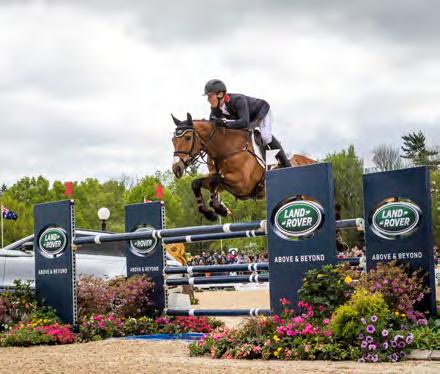
7 Spring Race Meet, Keeneland Race Course, Lexington, through April 28, 859.254.3412
14 TriFest downtown Henderson, through April 16, 270.835.4667

21
Shrek The Musical Jr., SKyPAC, Bowling Green, 270.904.1880
28
Grand Rivers Bluegrass, Beer & BBQ Fest Little Lake Park, Grand Rivers, through April 29, 270.362.0152
3 Third Eye Blind, The Louisville Palace, 1.800.745.3000 a guide to Kentucky’s most interesting events
For a more extensive listing of events, visit kentuckymonthly.com.
8
The Elvis Presley Show, Badgett Playhouse, Grand Rivers, 1.888.362.4223
15
Guided Hike: Tree 101 Mahr Park Arboretum, Madisonville, 270.584.9017
22
The Isaacs in Concert Bluegrass Music Hall of Fame, Owensboro, 270.926.7891
29 Lexington Philharmonic: The Power of Influence Lyric Theatre, Lexington, 859.233.4226
(Warning: Those with weak stomachs should move on to the Kentucky Kwiz.)
Write it down. I AM the fifth grader who threw up on Laura Schroerlucke (now Berry). Underline it and highlight it, if you wish.
Why would I share such an embarrassing moment? Why not? It comes up whenever I run into Laura and/or classmate Phil Bloyd, who works for the National Society Sons of the American Revolution in Louisville.
The other night, we were at dinner in Churchill Downs’ Matt Winn Room with the other members of Phil’s fantasy football league, when it came up for the 200th time.
“Hey, Steve, why don’t you tell the story?” Phil asked after starting to tell the tale.
“Sure,” I said. “Once upon a time, I alerted my childhood friend of a job opening …”
“That’s not the way it goes,” he said.
“Yes, it does. I helped my friend, who as development director has done such a good job that he was called by a national magazine for a cover feature …”
“That’s not the way it goes. You haven’t mentioned milk break or Laura at all.”
“I thought you wanted me to tell the story.”
“Get to the point.”
“Have you ever seen a gastroenterologist?”
“Why would I do that for something that’s only happened a few times in my life?”
“You mean there’s more?”
“Oh, yes,” I said, relating the stories of seasickness with my Uncle Skeeter while deep-sea fishing off the Clearwater coast and in 19-foot waves with Sharon Amberg and Miel Domis, who ran Versailles’ Rose Hill Inn from 1997-2007. “When I stood up after hanging over the back of the Rose Sail Inn Boat and Breakfast for quite some time, a cruise ship full of tourists were taking my picture.”
After coming off the tilt-a-whirl, I ruined another birthday party, this one at a shopping center carnival in about 1967. “Jimmy’s clothes are ruined!” screamed the mom, seeing his madras outfit plastered with the remnants of several corn dogs, kettle corn and pink cotton candy.
All agreed that motion sickness was understandable, but at least one dinner guest still thought I should see a gastroenterologist.
“Oh,” they said, “I should probably include the confession of how I once destroyed a dentist office.”
“What?”
STEPHEN M. VEST Publisher + Editor-in-Chief
“I thought I was. So, my friend Phil lands a job and a cover feature, partially due to me. He mentions me, which was nice, but when the reporter asks a follow-up question about how we met, Phil tells her the entire saga of how on my third or fourth day in a new school [Gutermuth Elementary in January 1973], I ruined Laura’s new Christmas outfit, resulting in a call to the janitor, who quickly arrived with the sawdust bucket. Laura was such a mess, they sent her home.”
The entire story, including how we had just finished milk break after having chili for lunch, reached a national audience of hundreds of thousands.
While on a roll, I told how I’d ruined another little girl’s birthday party when I was 4. “We were at Fort Walton Beach,” I said. “The guests were asked to wear white.” The rest of the story is like Laura’s, except I had consumed copious amounts of white sheet cake and dark red fruit punch.
Kwiz
“Yeah, we had moved to Myrtle Beach, South Carolina, and Dr. Gist, my Louisville dentist, recommended his friend from dental school for a molar that needed pulling. The friend wrote me a prescription for Demerol. He said I should take two before I left home, and by the time I reached his office, 15 minutes away in Conway, South Carolina, I should be ‘feeling no pain.’
“In the short walk to my car, I turned sheet white.
“When I walked into the dentist’s office, they immediately took me into a dark room and put a warm towel on my forehead. I sat there for the longest time. I was obviously having a reaction to the Demerol.
“Out of curiosity, I asked the dental assistant if I were to get ill, where should I go. ‘Two doors down the long hall, on the right.’ ” [Yes, there’s a bathroom on the right.]
“I bolted and had some sort of tunnel vision. All I could see, in slow motion, was high-quality reproductions—there’s a Rembrandt, a Monet, an original by Vernon Grant, the creator of Snap! Crackle! Pop!— lining the wall as I tagged each one, including the dentist’s composite from the University of Louisville. The last face I saw was that of Dr. Gist. I’d guess I did $35,000 damage to his office [in 1990s dollars]. It was a scene from a horror film. Everyone was terrified.”
“Forgive me,” said my tablemate. “You don’t need to see a gastroenterologist. You need to see a psychiatrist.”
Answers: 1. C. The Royal Court, sponsored by The Fillies, Inc. dates to the 1930s; 2. B. The Pegasus Parade began in 1956; 3. B. Waiters and waitresses are judged on the best time and highest amount of wine left in their glasses; 4. A. The spring and summer months allow you to enjoy the outdoors and a plethora of beautiful attractions; 5. C. Established as a National Park in 1941 and dedicated in 1946, Mammoth Cave is the world’s longest cave system; 6. A. There is never fewer than 80; 7. C. After a fire destroyed her home, supplies and equipment in 1933, Ruth Booe started anew with a loan from Fanny Rump, a hotel housekeeper; 8. B. Hillbilly Days attracts more than 100,000 people to Pikeville each year; 9. A. The National Quilt Museum opened in 1991; 10. A. Adlai Stevenson I (1835-1914) served as vice president to Grover Cleveland and was the grandfather of Adlai Stevenson II, who ran for unsuccessfully ran for president in 1952 and 1956.
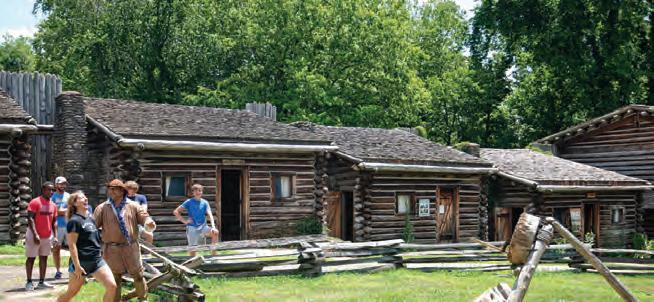
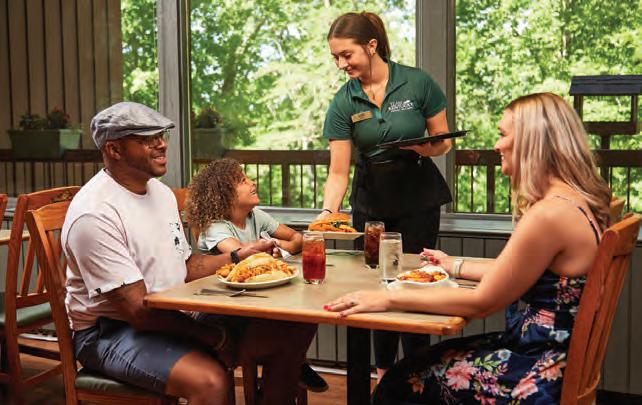






























































































This beautiful resort community offers the perfect destination with gracious hospitality, ultimate luxury, and an unforgettable experience.

Let us help you plan your trip today!

